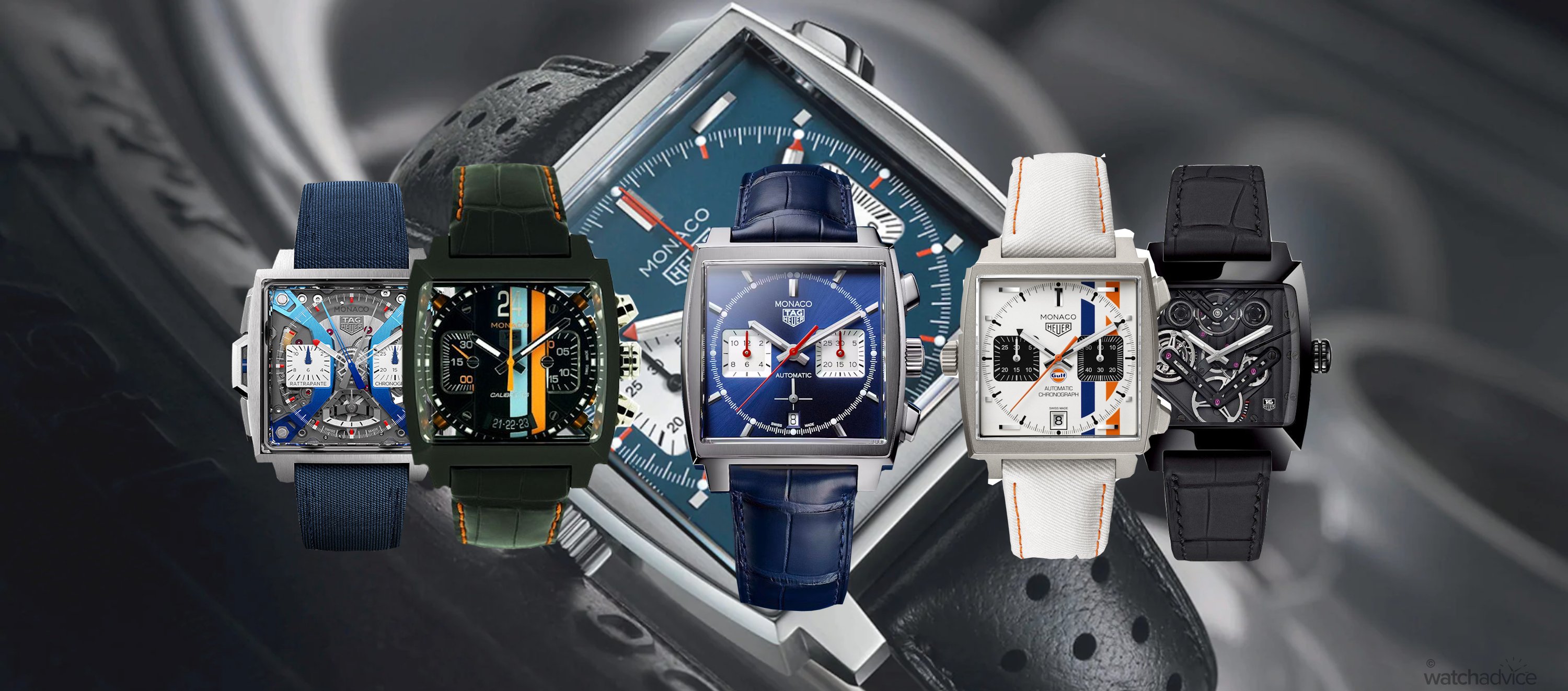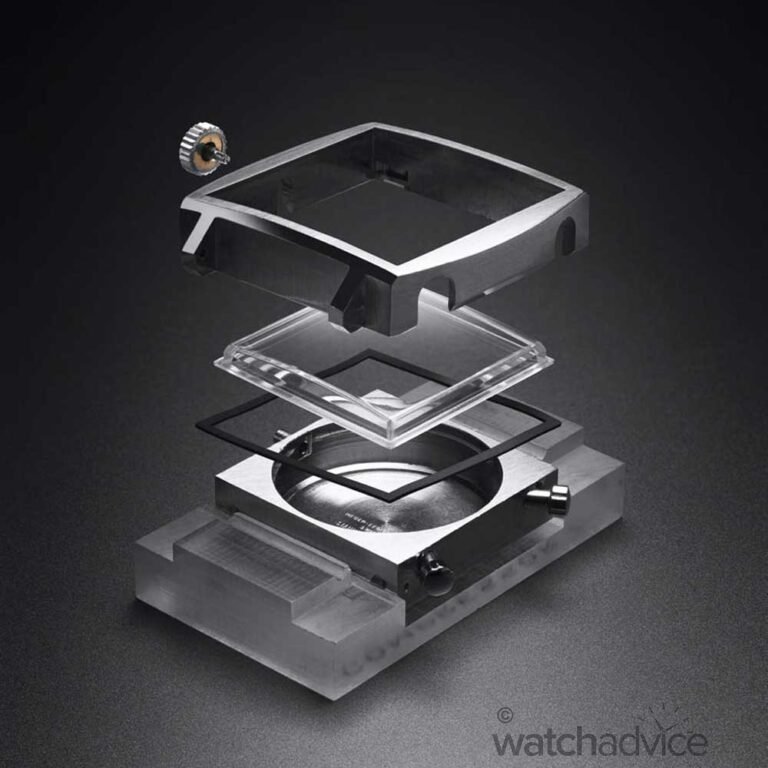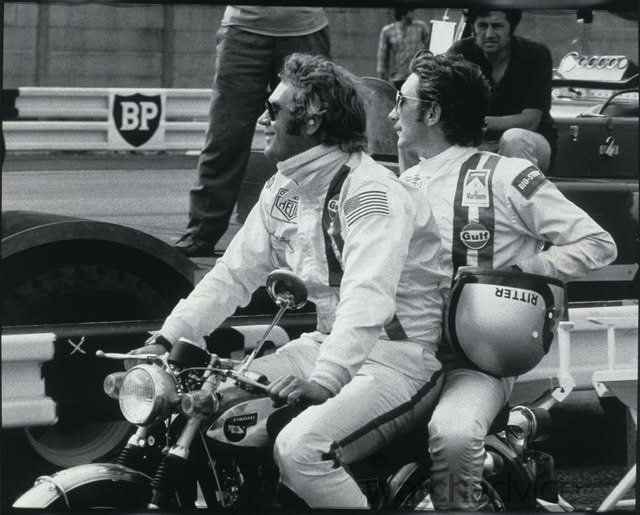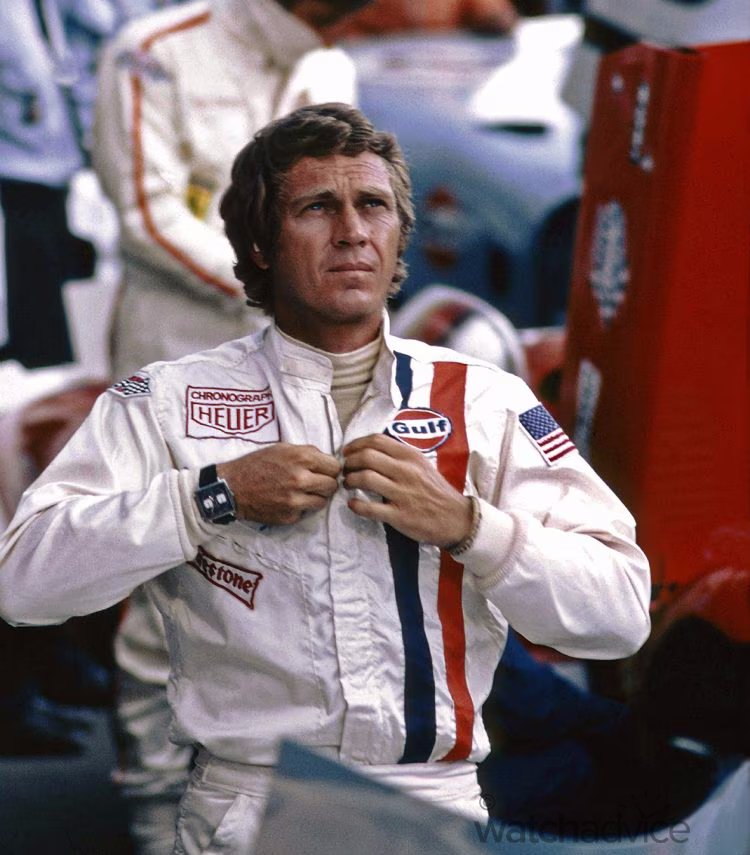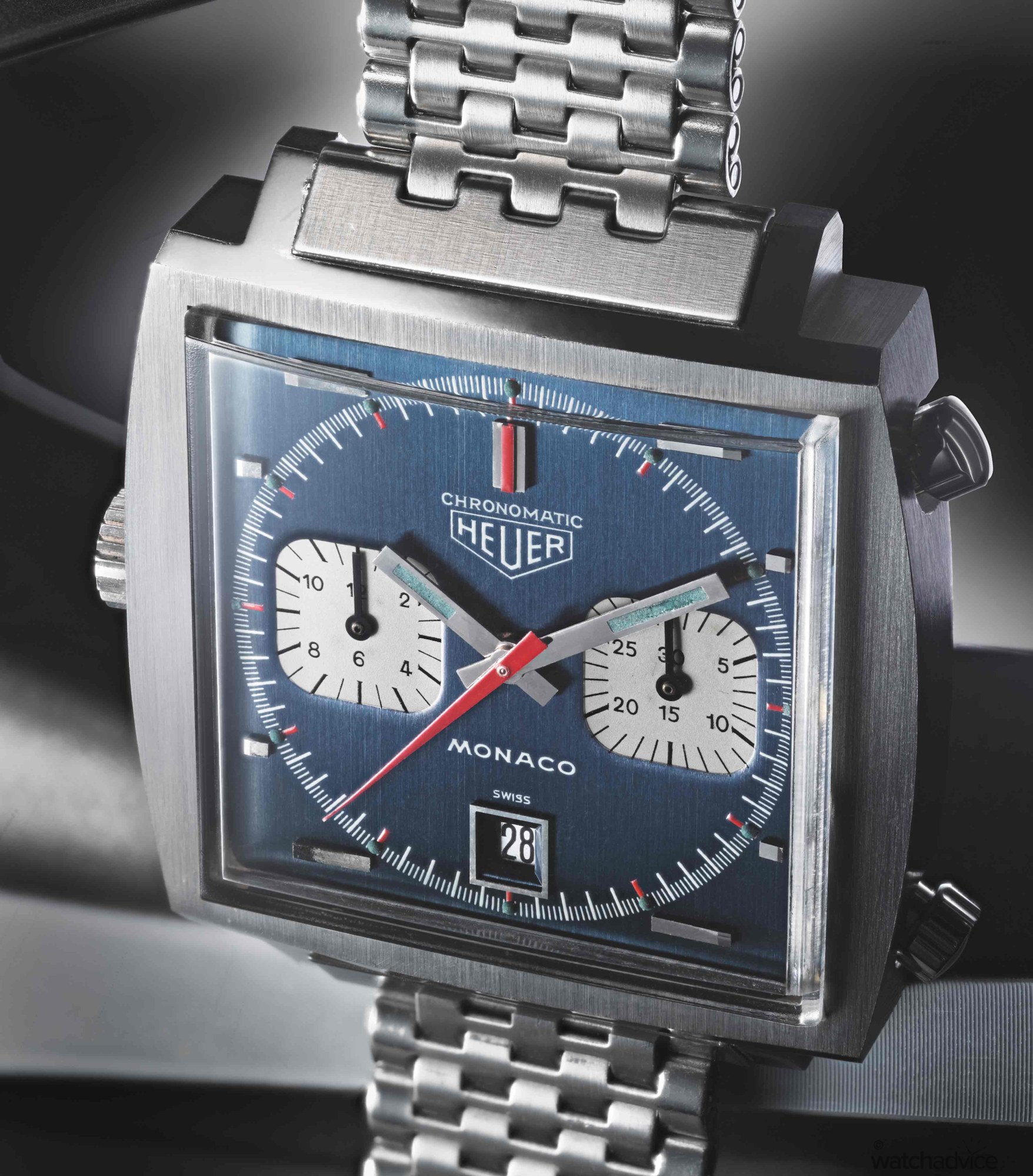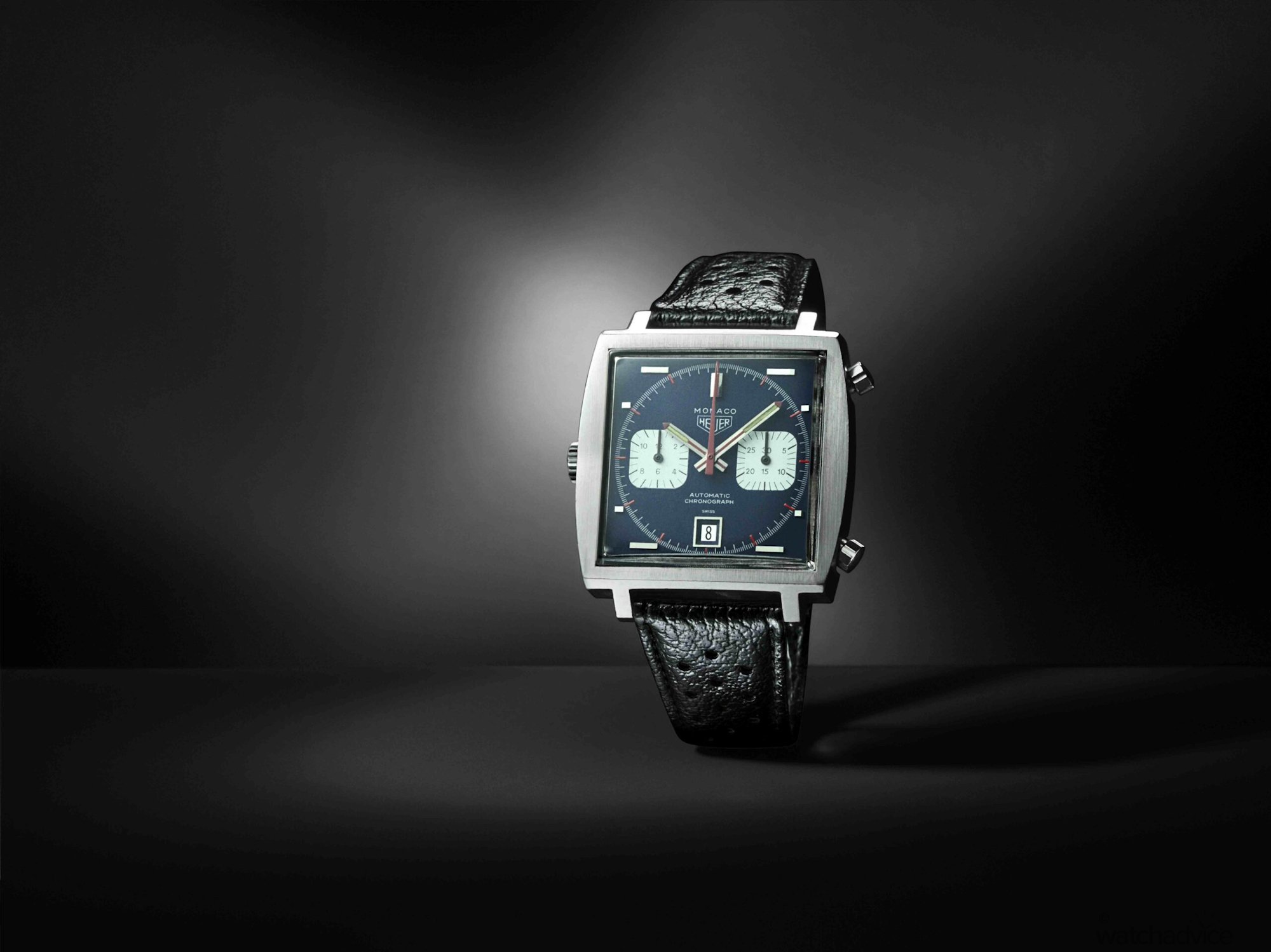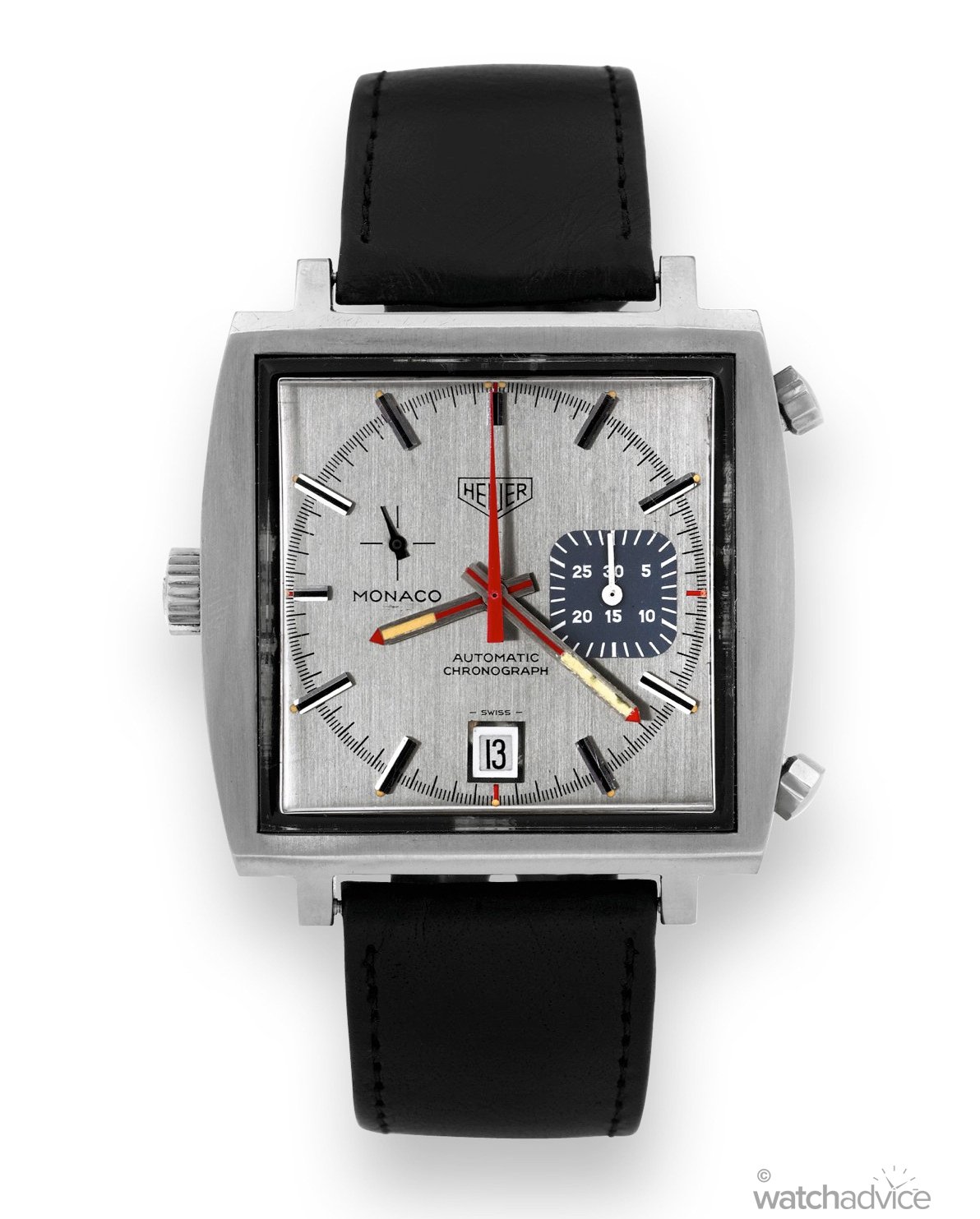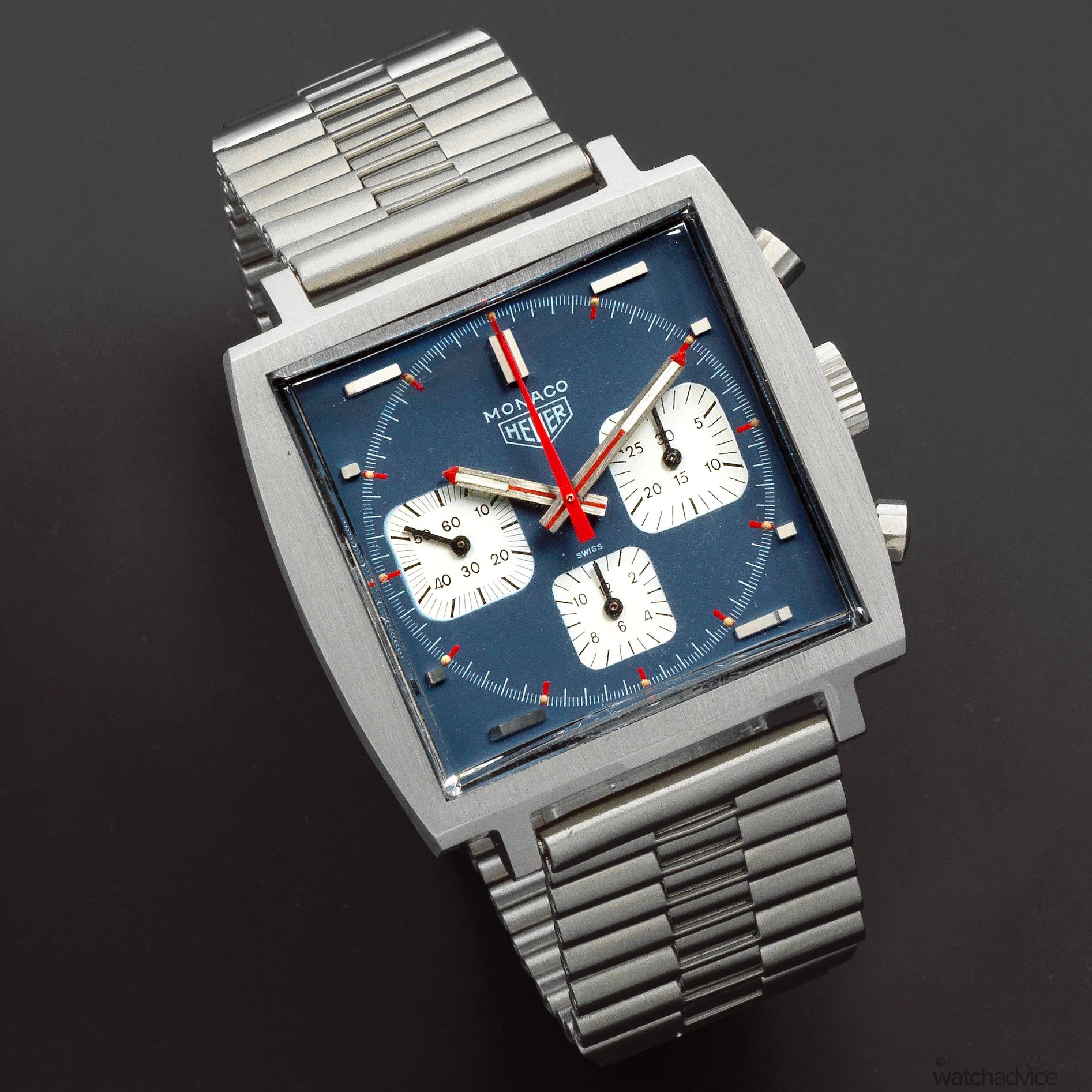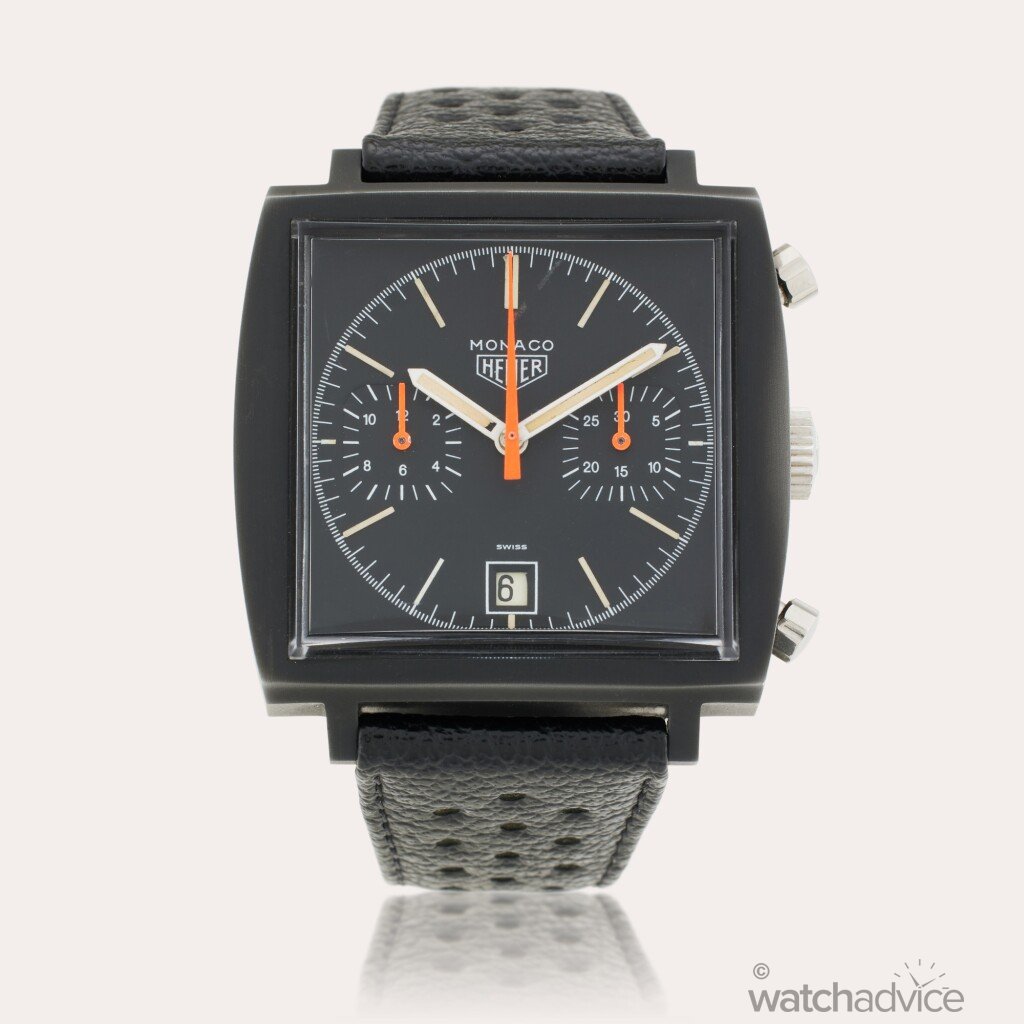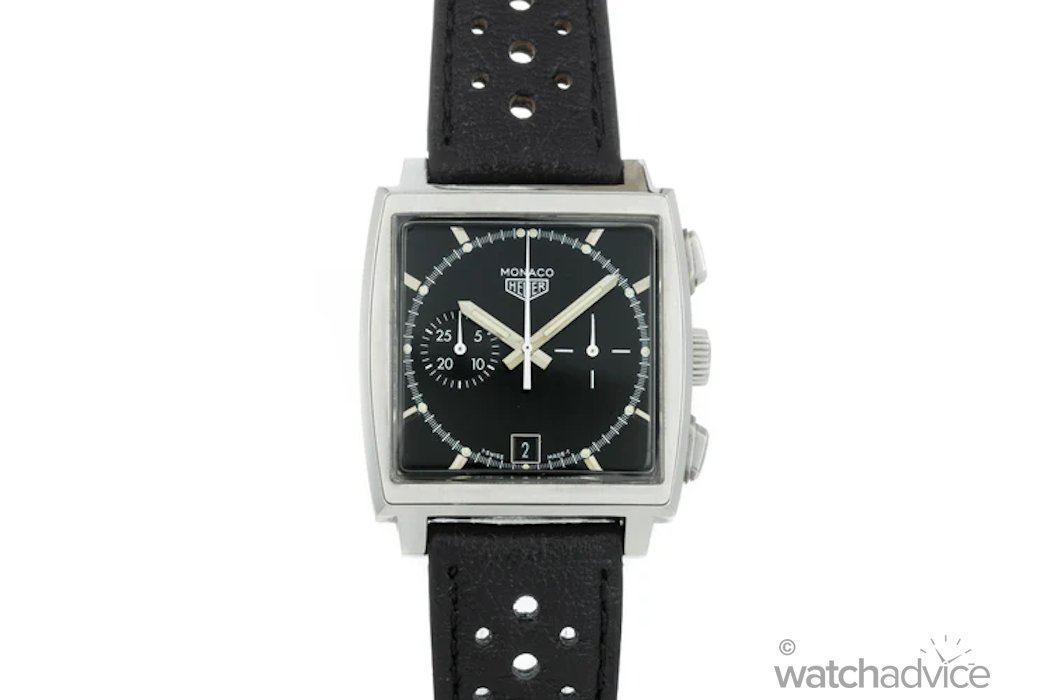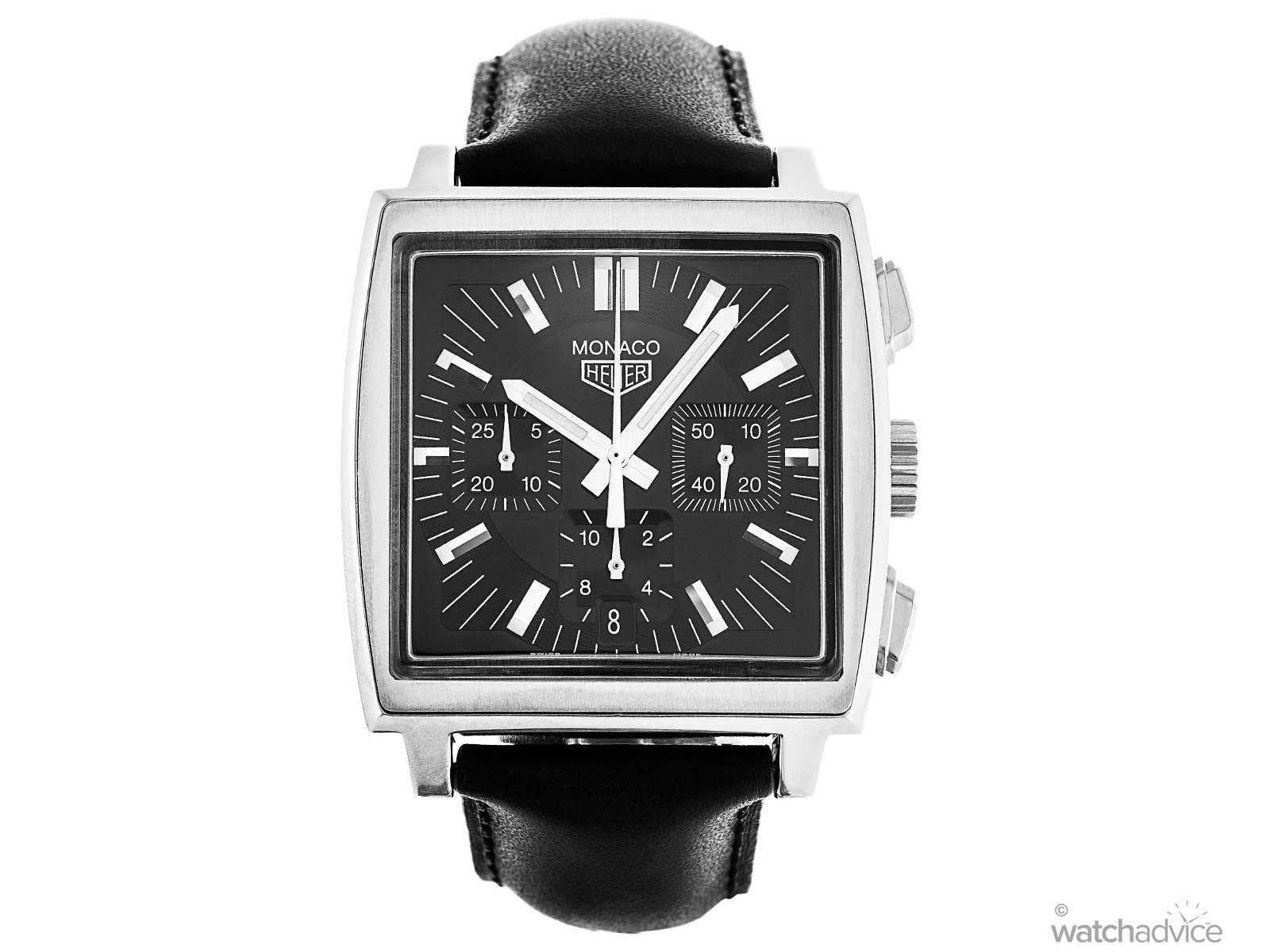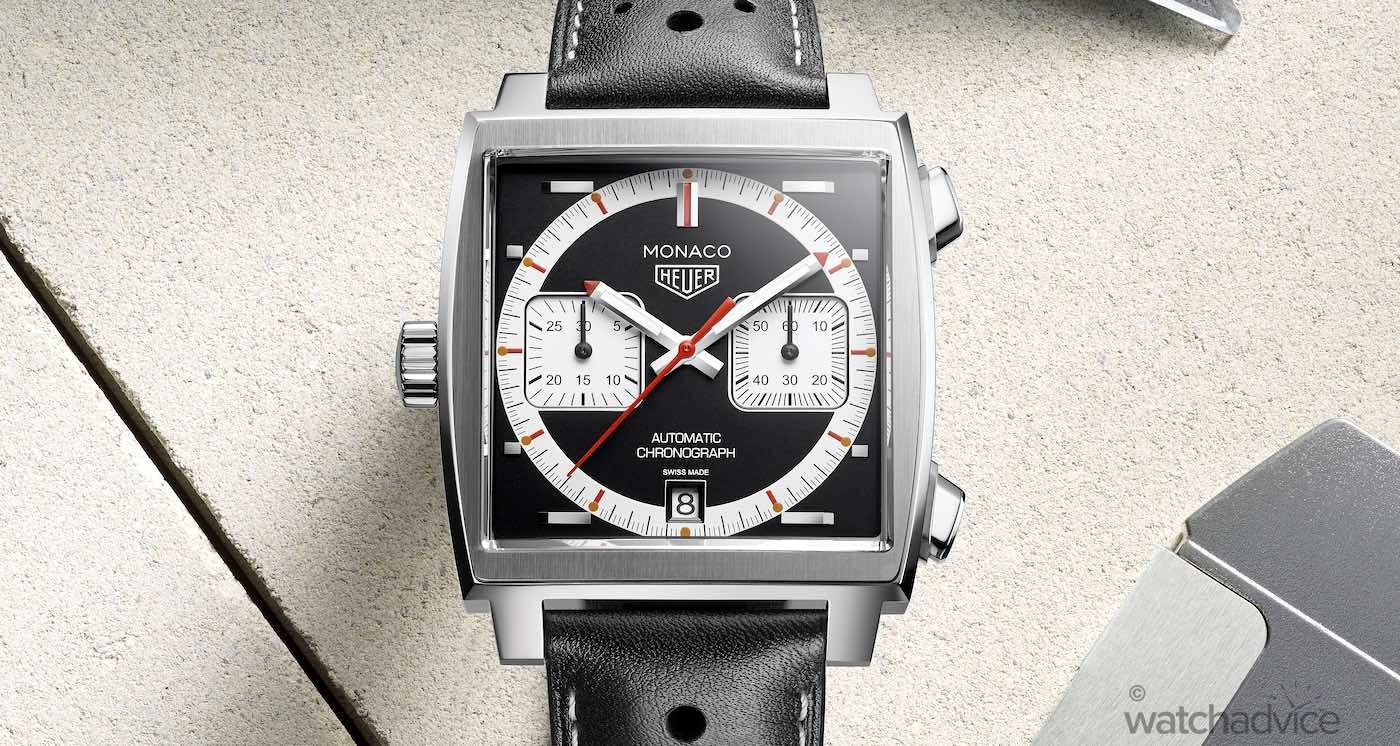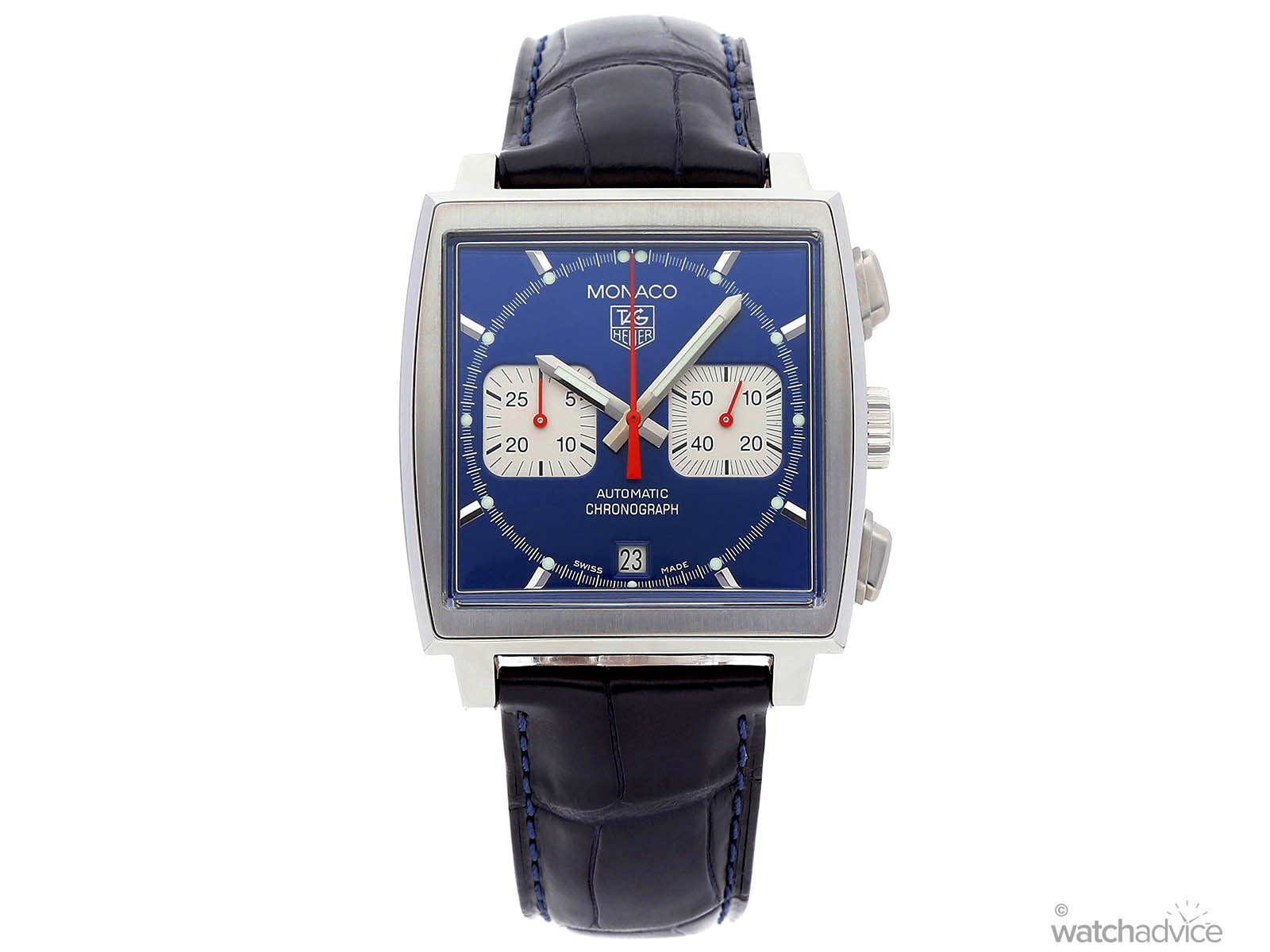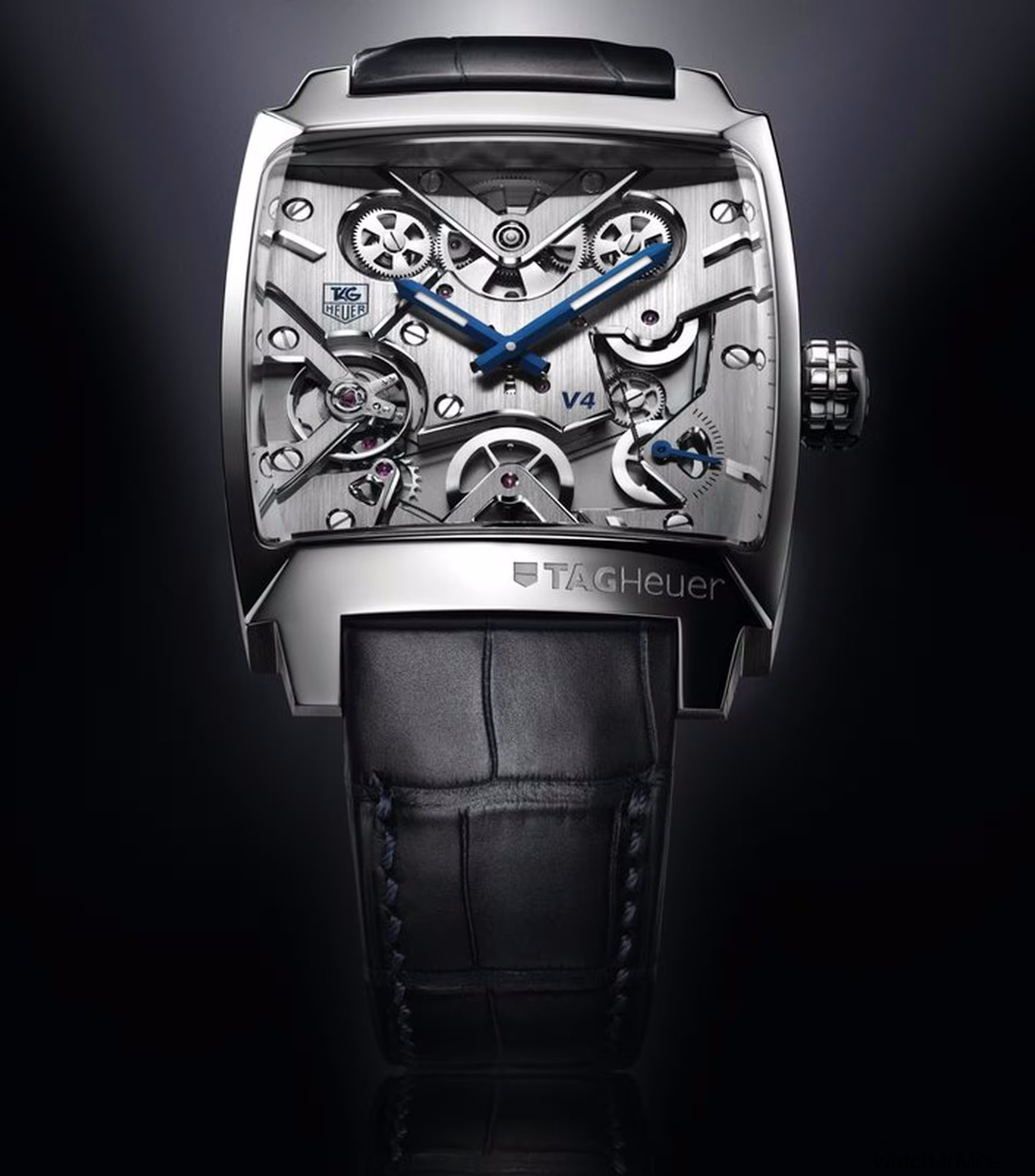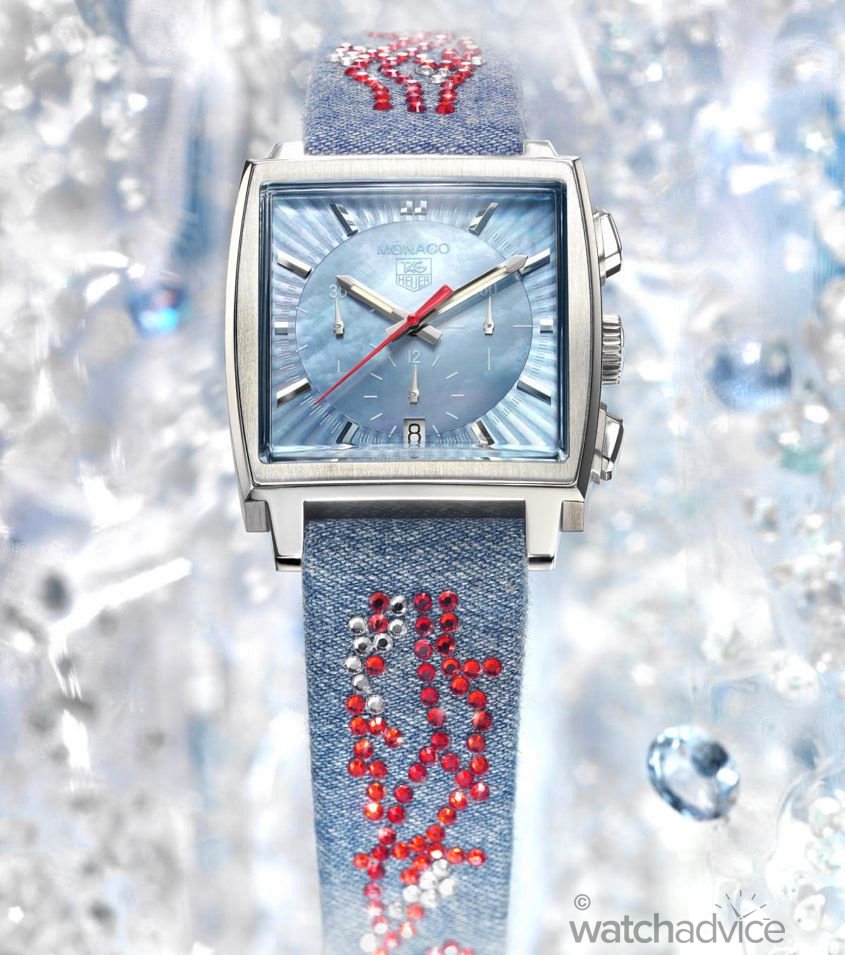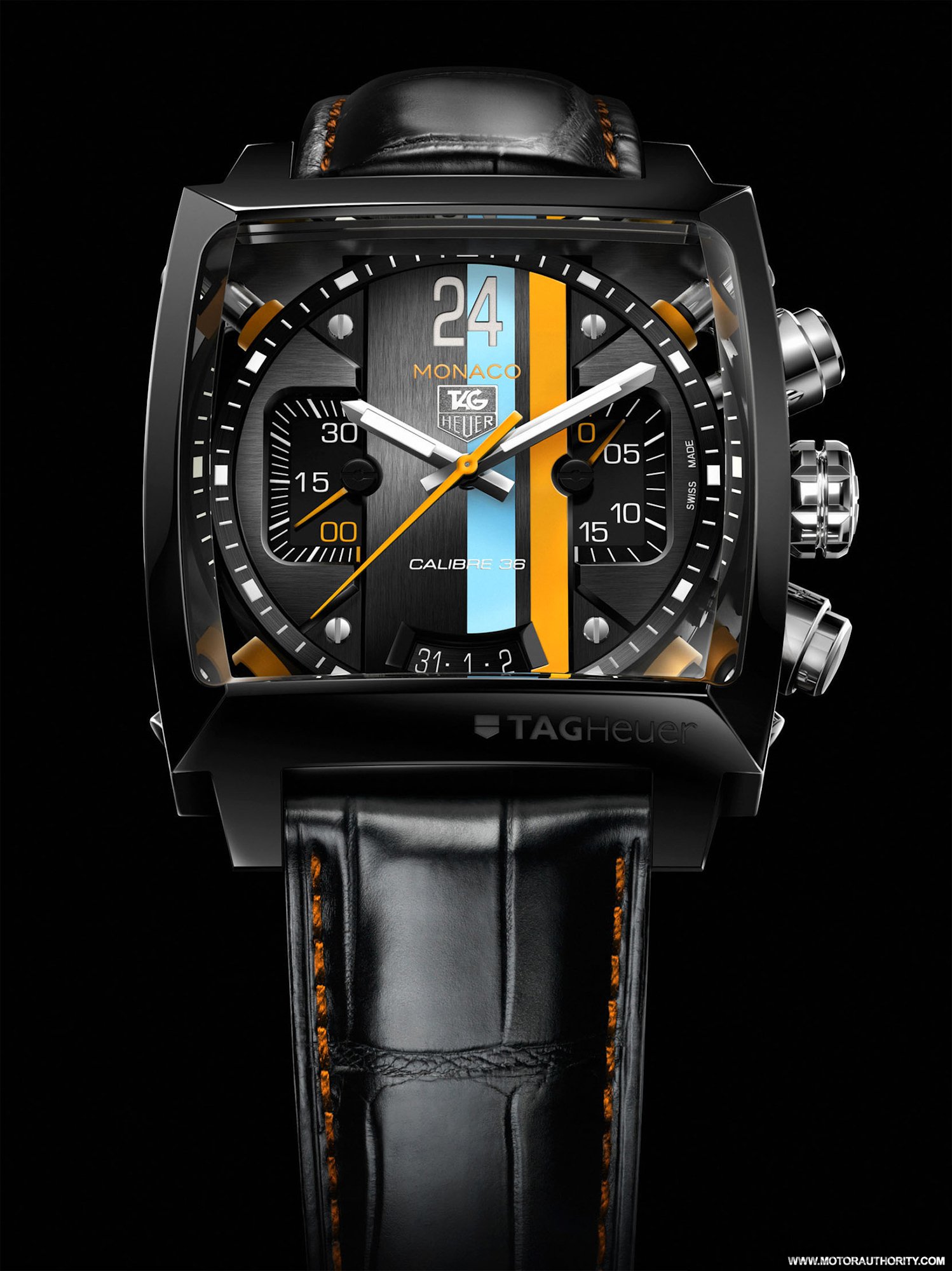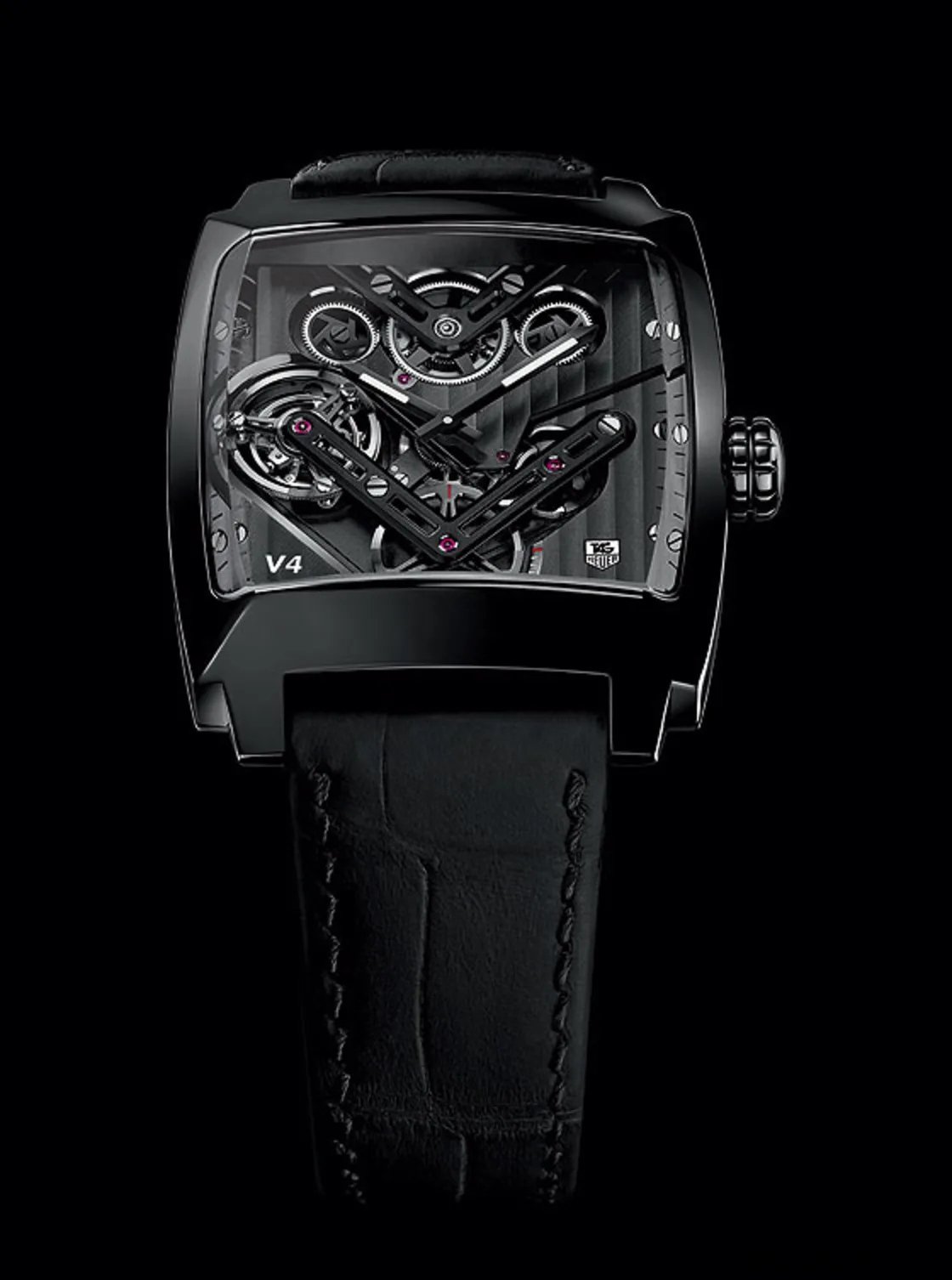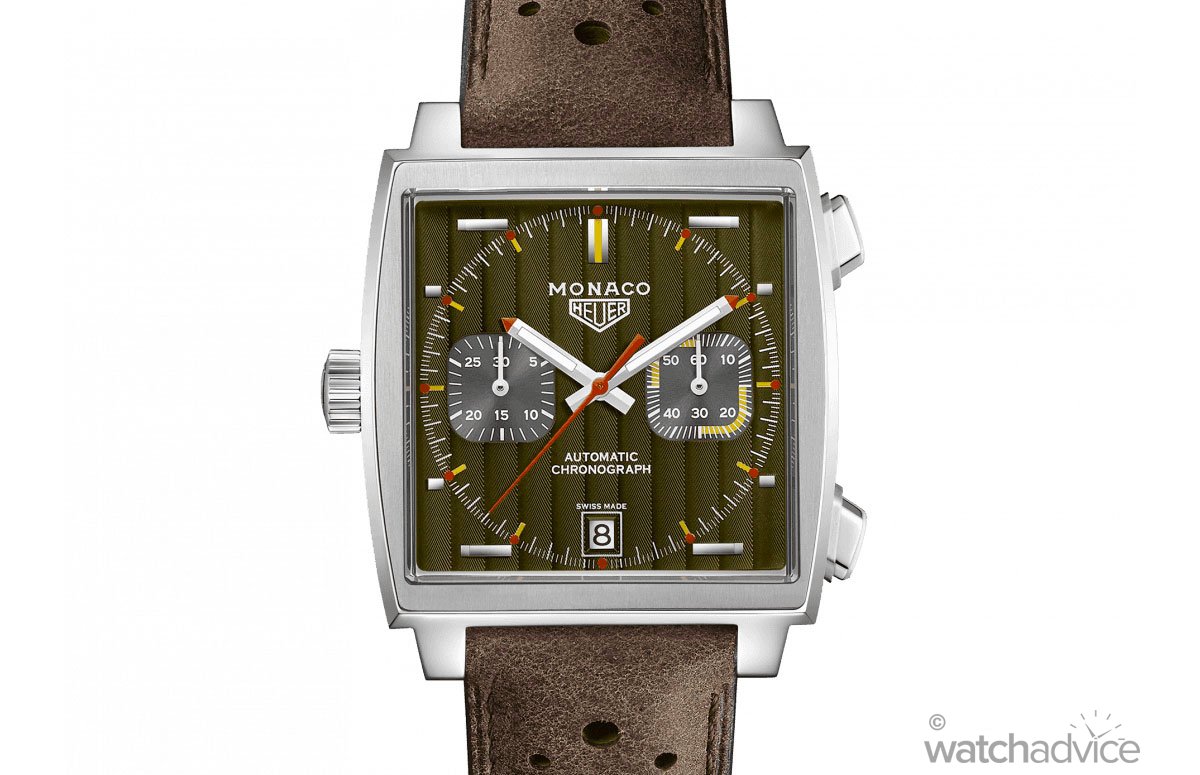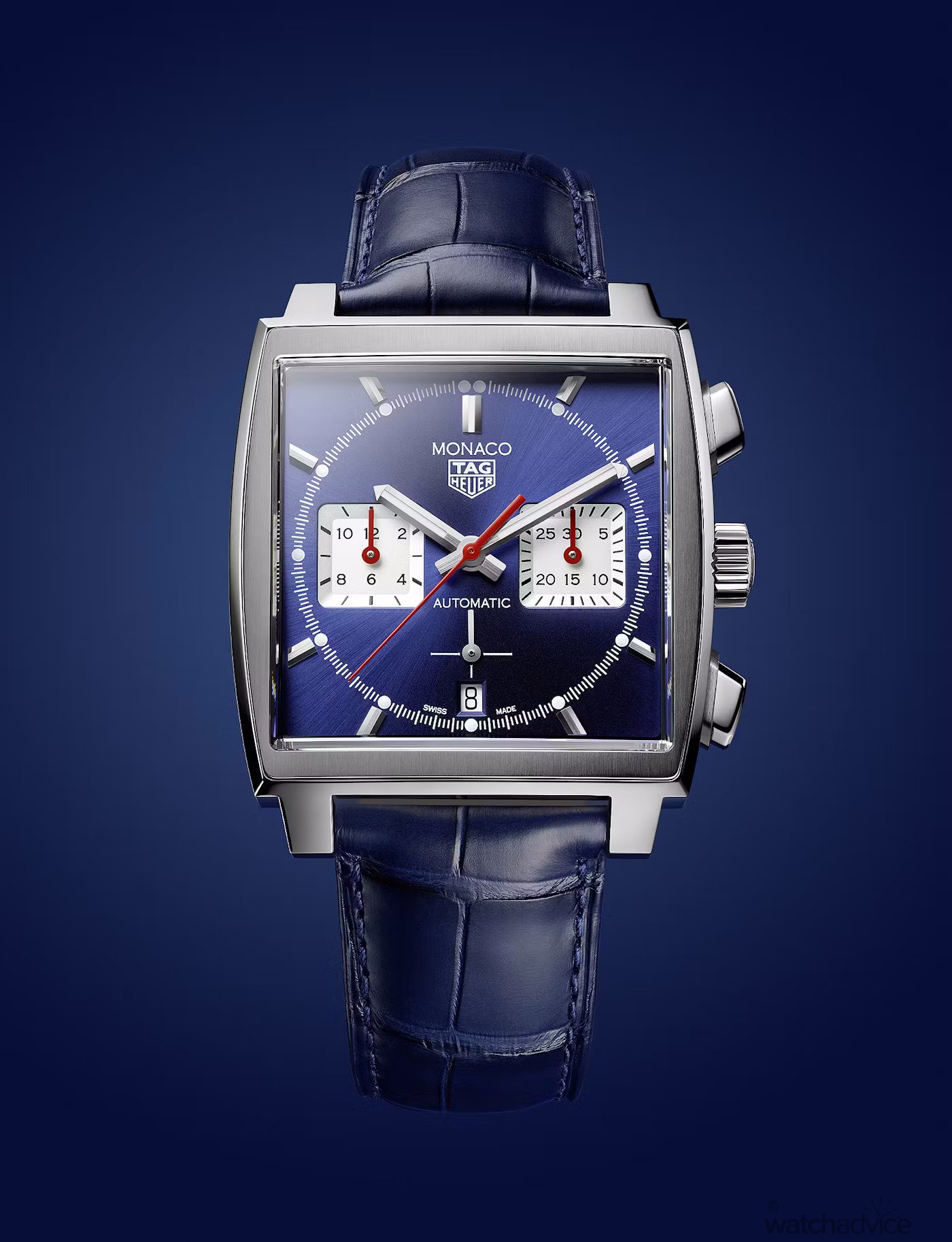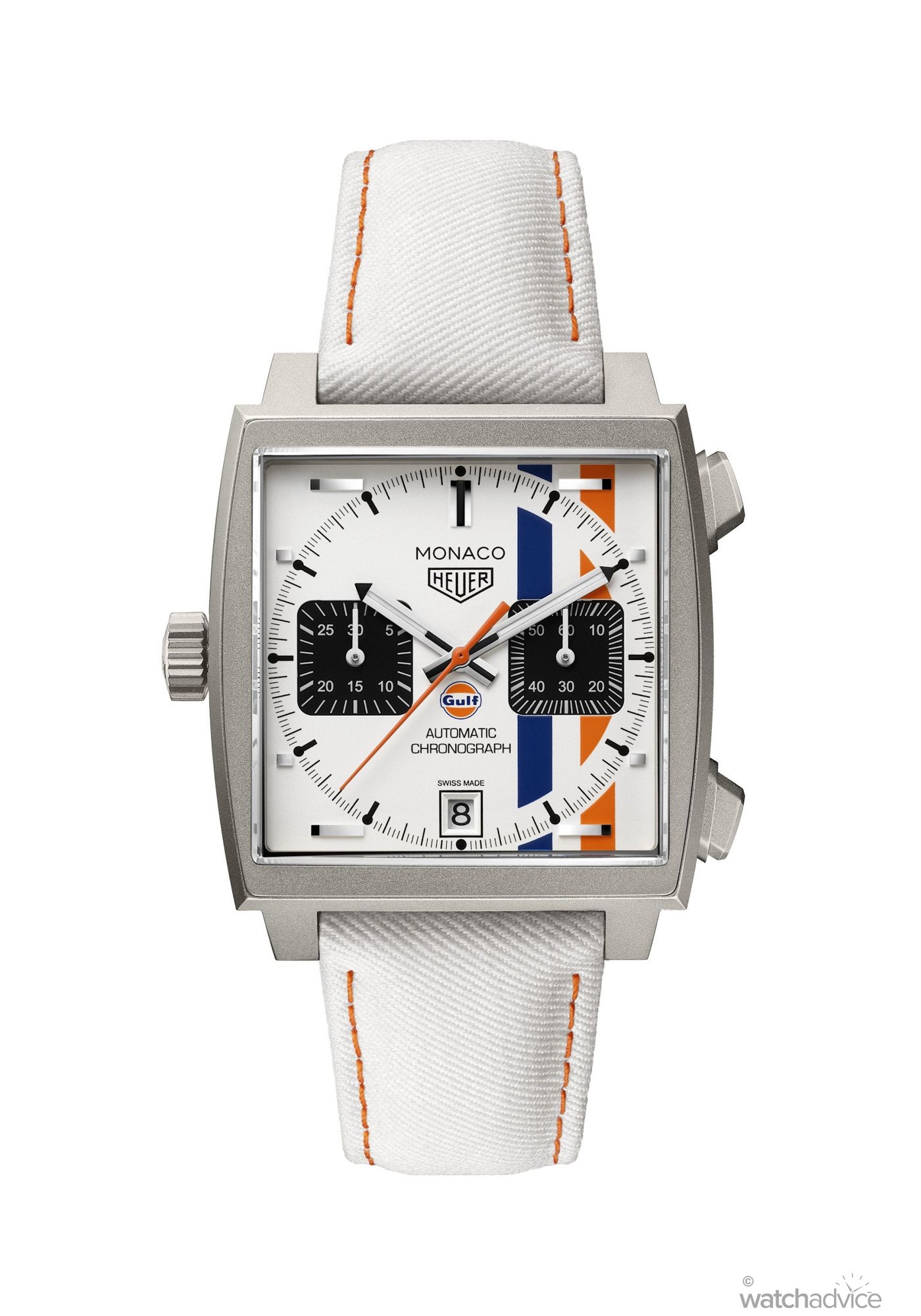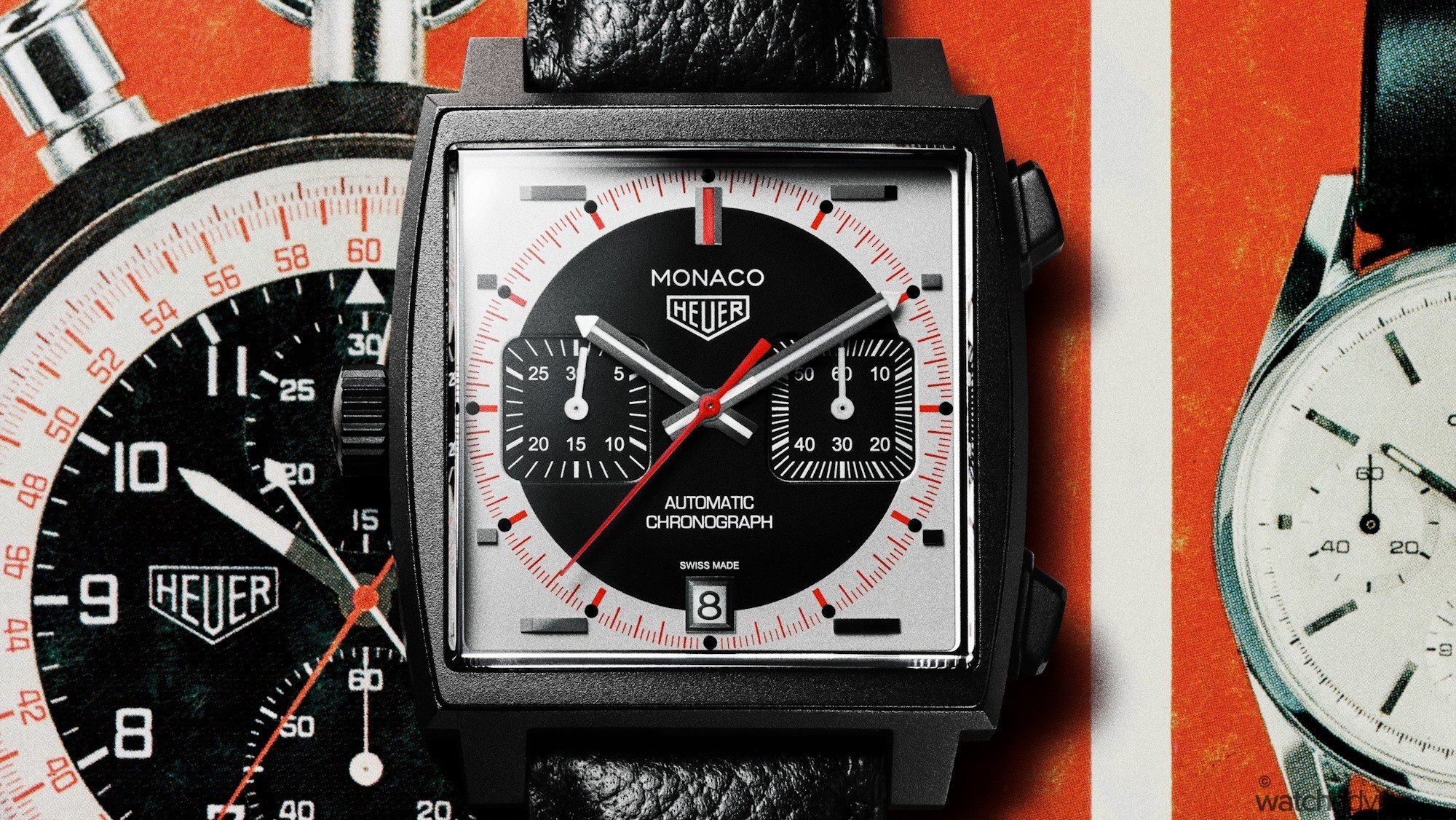Born from rebellion, fuelled by innovation, and immortalised by legends, this is the story of the TAG Heuer Monaco! From McQueen’s silver screen to Verstappen’s podium wrist, the Monaco isn’t just a watch; it’s a legacy on a square canvas. More than 50 years on, it’s still breaking rules, and still making history.
There are only a few watches in the world of horology that have dared to defy convention quite like TAG Heuer’s Monaco. A square-cased rebellious design born during a time of round conformity, the TAG Heuer Monaco was built not just to tell time, but to make a statement.
When I think of square case designs, there are only two that I immediately think of: the Monaco and Cartier’s Santos collection. While the latter is rooted in elegance and luxury, the Monaco has turned into a motorsport icon, synonymous with speed, rebellion, and the golden era of racing. The bold square silhouette of the Monaco case isn’t just a simple design choice, but rather a statement from Jack Heuer to want to stand apart from traditional watchmaking at the time.
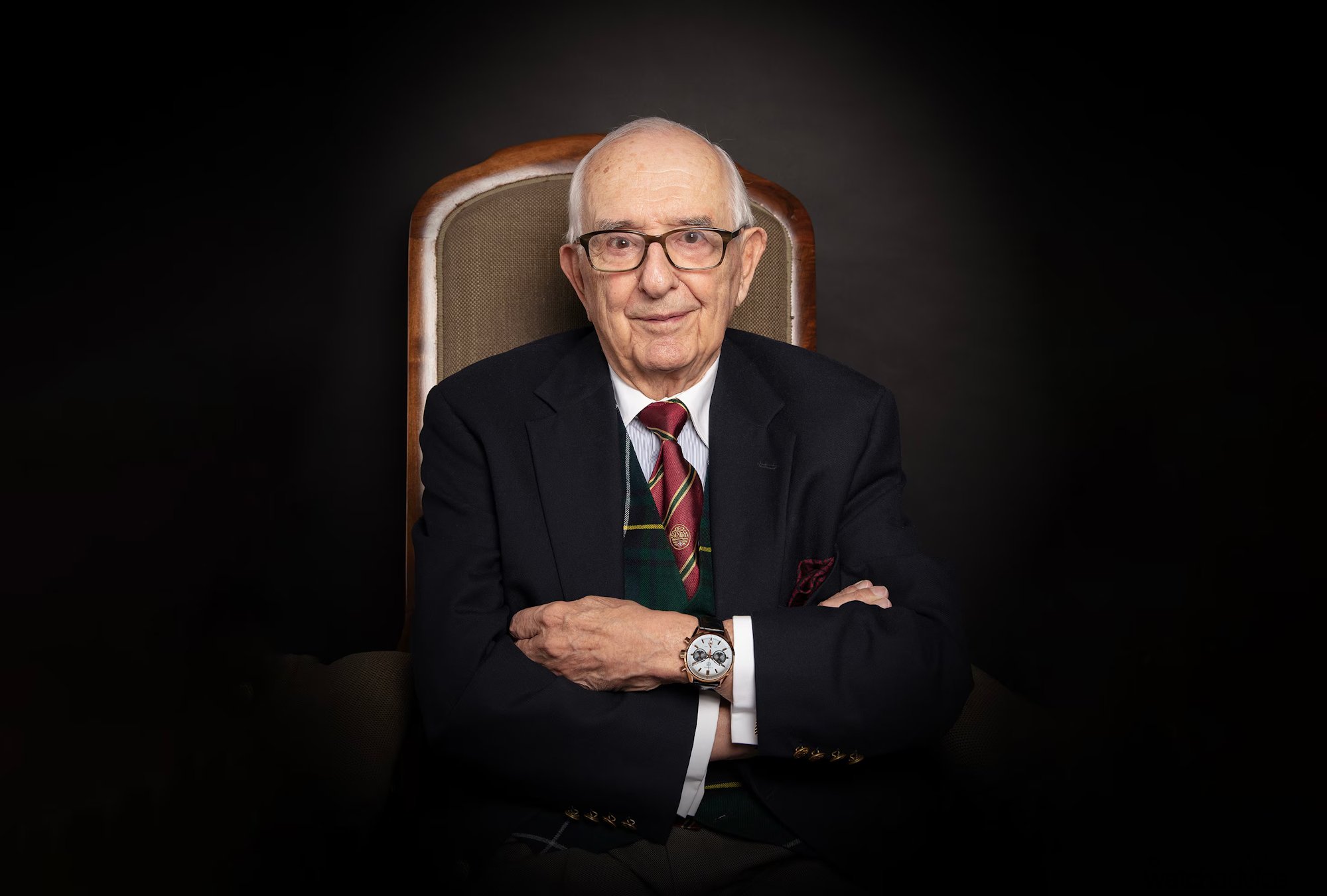
“For Heuer, it was not enough to conquer the engineering challenge of combining automatic winding with a chronograph function: he wanted the resulting watches to clearly demonstrate that they belonged to a bold new generation of sports watches.”
While the TAG Heuer Monaco is an icon in the motorsport world, this was not its intention when Jack Heuer developed the first models. It was created in a race against other Swiss watchmakers to launch the first-ever automatic chronograph. As you may know, the Monaco evolved over time into something far greater. A timepiece that broke the rules of design and found its true identity not just on the wrists of watch enthusiasts, but on racetracks and movie screens alike.
As someone who’s owned sports cars and has a deep appreciation for the world of motorsport, the Monaco has always stood out as one of my favourite releases from TAG Heuer. There’s just something about the square form, racing heritage, and the boldness that makes it feel right at home with the thrill of driving. Over the years, watching TAG Heuer expand the Monaco collection has been a joy; however, the latest release is hands-down my favourite. Inspired by Steve McQueen’s iconic racing suit, it is a stunning tribute to a legendary moment in watch and racing history.
From Monaco’s unconventional beginnings to becoming a symbol of cool on the wrist of McQueen himself, the timepiece’s story is anything but ordinary. In this latest Legacy of Iconic Watch Designs article, I’ll explore the origin story of the Monaco and how it weathered brief obscurity, became a cinematic and motorsport legend, and ultimately, secured its place as one of the most recognisable square watches in the world.
The Birth of a Legend – Heuer Monaco Origin
The story of the Monaco extends well beyond its groundbreaking release on March 3rd, 1969. In the mid-1960s, the Swiss watch industry was undergoing a pivotal shift. The Fédération Horlogère had been collecting data on consumer trends, and one thing became clearly evident: manual-wound timepieces were falling out of favour, as the demand for automatic watches surged. For Jack Heuer, this certainly presented a major challenge, as all of his timepieces at the time were manual-wound. If the brand wanted to stay competitive, innovation would no longer be optional; it would be essential.
Former CEO Charles Heuer considered the creation of an automatic chronograph timepiece as early as 1963. This was when the first micro-rotor automatics were available on the market; however, it was still deemed to be too thick for an automatic chronograph movement. It wasn’t until 1967, when Buren released a much thinner automatic micro-rotor movement, that Jack Heuer revisited the idea of creating an automatic chronograph.
Before embarking on this special project, Jack Heuer approached the complications specialist Dubois-Depraz, with whom Heuer had a long-standing partnership in creating sports timing stopwatches. The discussion was on whether it was possible to add a chronograph module to the Buren base automatic calibre movement. Dubois-Depraz was up to the task, and an agreement was reached upon; however, Heuer now faced another problem. Dubois-Depraz’s estimate of the project costs was much higher than Heuer had imagined.
Driven by the necessity to innovate, Jack Heuer took an unconventional approach and reached out to a competitor to help bankroll the project. This competitor was Breitling, another Swiss giant in the world of horology. Rather than compete head-to-head, the two brands joined forces to create the first automatic chronograph timepiece.
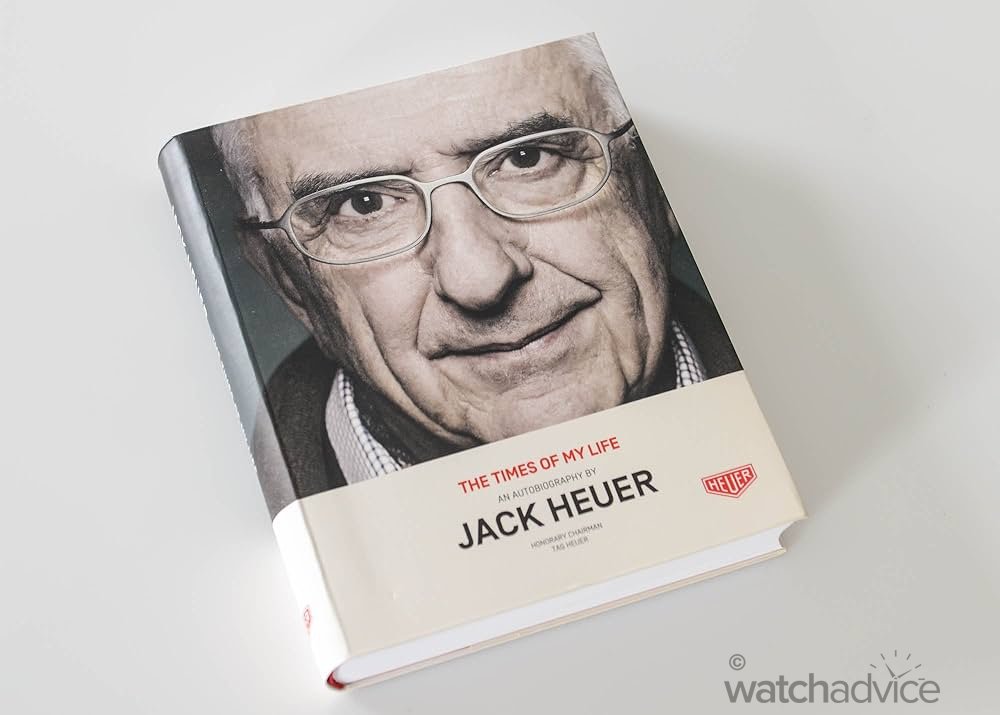
“A partnership was reached with Breitling, and as Jack Heuer recalls in his autobiography The Times of My Life, it was one that played to Heuer’s market strengths both thematically and geographically, with its strong reputation in the USA and UK and peerless position as a maker of motor-racing related watches.”
The four firms, Heuer, Breitling, along with the movement specialists Buren and Dubois-Dépraz, worked together under the codename Project 99 to create this innovative masterpiece. An agreement between each of the firms was created that the first watches that housed this new movement would be known as Chronomatics. This, however, quickly turned into a race to become the first to produce an automatic chronograph. Heuer released that there were two other major players in this race: Seiko from Japan with Calibre 6139 and another Swiss giant, Zenith with the El Primero.
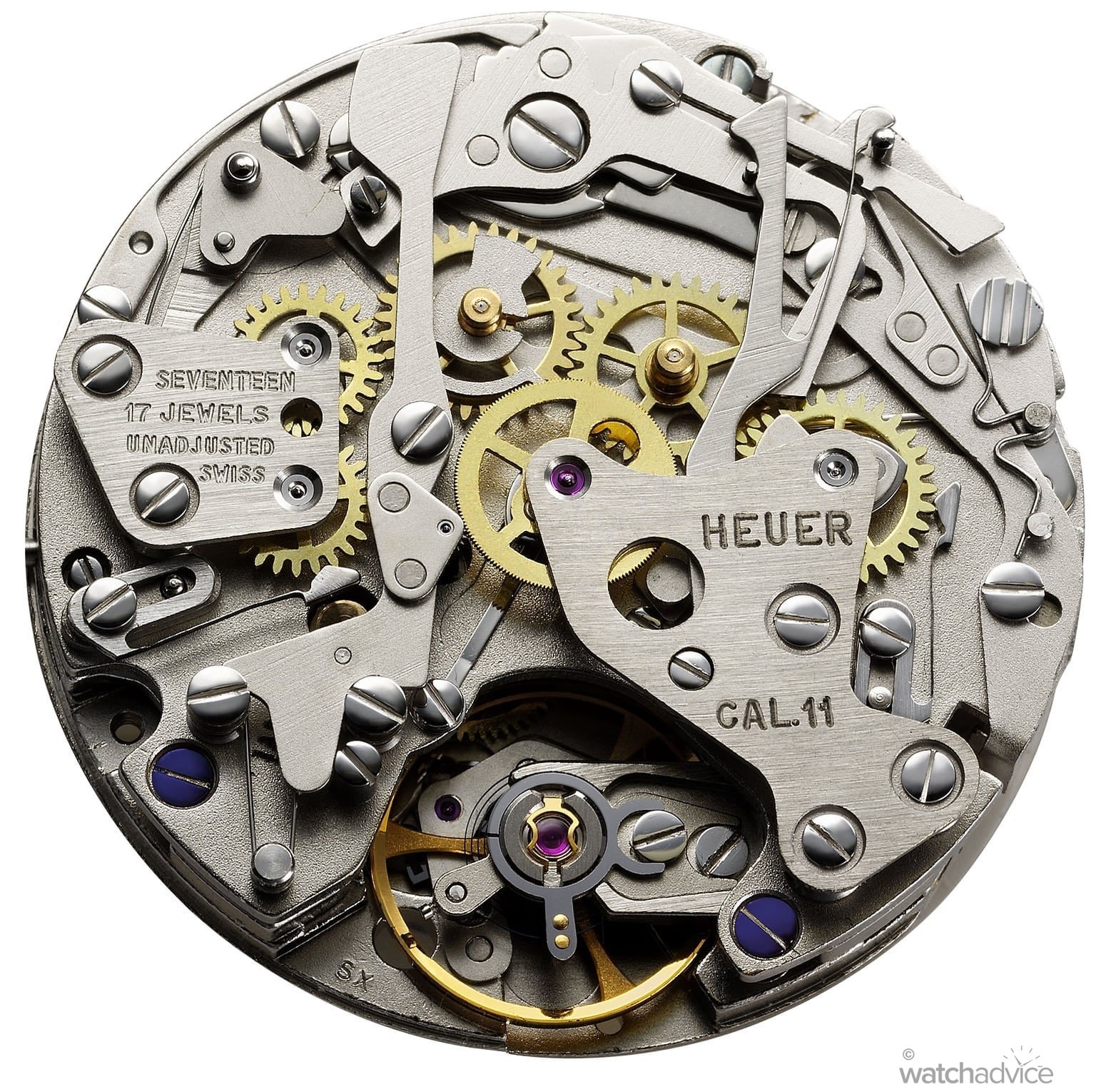
As the competitors were striving towards their goal, Project 99 was also full steam ahead. By the end of 1968, Project 99 had created 100 prototype watches that were ready for final tests. Heuer had a final release date of the world’s first automatic chronograph movement on March 3rd, 1969. However, as TAG Heuer recalls, an event transpired on January 10th, 1969, that would make Jack Heuer ” nearly choke on his morning coffee”. This was Zenith coming out with the legendary El Primero (meaning “The First” in Spanish). Out of all three watch “projects” in the race for the first automatic chronograph, Zenith’s El Primero was by far the most technically advanced of the three, beating at an incredible 36,000 VpH frequency.
While initially amazed by Zenith’s creation, Jack Heuer and the consortium of four firms involved in Project 99 stood by their project as they knew it would be a bold new design that would change the face of watchmaking (quite literally). Alongside creating an automatic chronograph calibre, two other decisions were also made to make Project 99 an innovative masterpiece.
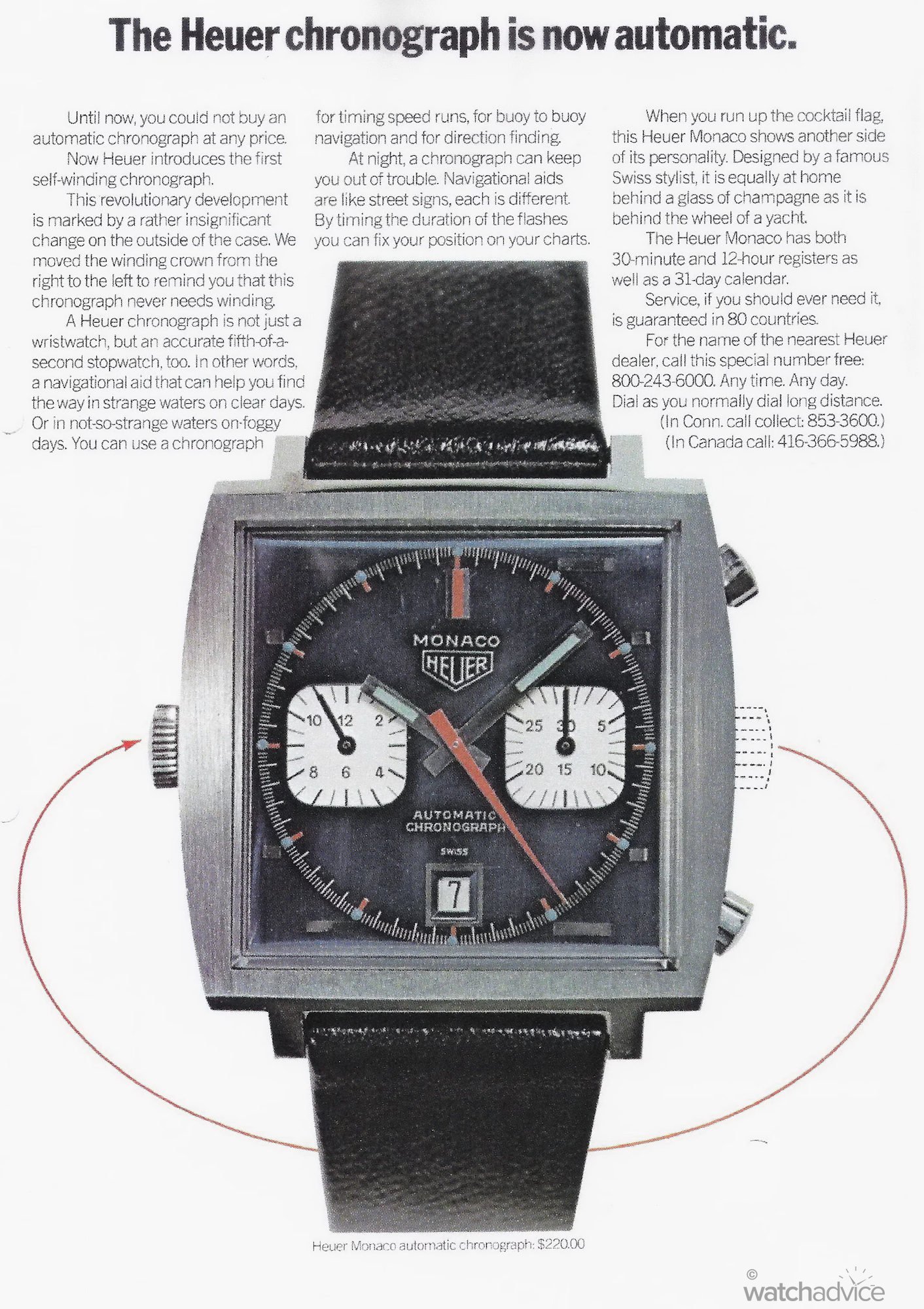
“Initially, we all thought a crown on the left side did indeed look weird, but then we decided to turn it into an exclusive and distinctive feature. By having the crown on the left, we would in effect be saying: “This chronograph does not need winding every day because it is automatic.”’
The first was to place the crown on the left side of the timepiece, rather than the traditional right-hand 3 o’clock placement. The second was one that only Heuer pursued: to create a new, groundbreaking case design. As Heuer states, “something bordering on the avant-garde.” At a time when smooth curves were the norm on watch cases, a more angular case design felt unique, daring, and futuristic. Before Monaco’s release, it was deemed too hard to create square-cased mechanical watches due to a “minimum standard of water-resistance”. Heuer’s supplier, Piquerez, came up with the design for the watch, which Jack Heuer was immediately on board with, recognising it as the perfect revolutionary design to unveil the new automatic chronograph movement with.
Jack Heuer named this special creation “Monaco” after the Monaco Grand Prix. With Heuer already having a strong background in racing and motorsports thanks to the Carrera, Jack Heuer saw an opportunity to take this association even further. The glamorous and high-stakes Monaco Formula One race provided the perfect backdrop for a timepiece born from innovation, luxury, and racing heritage.
With all the elements perfectly in place, the Heuer Monaco made its official debut as expected on March 3rd, 1969. While it was not the first automatic chronograph movement, it was the first to package one inside a bold new water-resistant square case design, one with the crown on the left side and angled chronograph pushers on the right, something the industry had never seen before! The dial design of the Monaco has also become iconic, with dual-rectangular sub-dials, a date window at 6 o’clock, all within a circular minute track and hour indices. The hour indices were also an original design, with the traditional placement within the minute track followed by separate horizontal indices outside of it. The combination of avant-garde design and mechanical innovation made the Monaco an instant outlier, challenging everything the traditional Swiss watch world stood for.
The King Of Cool & The Monaco
How did a timepiece that was centered around horological importance step into Hollywood’s limelight? It all has to do with the American actor Steve McQueen. The story goes that in 1970, Steve McQueen was filming Le Mans, a movie that was centered around the legendary 24 Hours of Le Man’s endurance race. Very much like the latest Formula 1 Movie featuring Brad Pitt, where he took lessons and knowledge about Formula One from Lewis Hamilton, Steve McQueen worked with real-life racer and Heuer ambassador Jo Siffert to make the movie as authentic as possible.
Jo Siffert was already associated with Heuer and wore branded gear, especially to sets, which included a racing suit with the Heuer logo. McQueen wanted to mirror Siffert’s style and clothing for authenticity, so he asked for the same accessories and racing suit. While several chronograph models were presented to McQueen on set, the Heuer Monaco Ref. 113B stood out to him, purely for its bold looks. As a result of this choice, the Monaco got significant screen time on McQueen’s wrist, forever linking the watch to the King of Cool.
The Monaco became an icon alongside Steve McQueen. The timepiece was impossible to miss, with the large square case and eye-catching blue dial making it a focal point in promo photos and racing scenes. One of the most famous images of both the actor and the watch is where McQueen is in a white Gulf racing suit, arms crossed, with the Monaco being visible. The image became a poster for both the film and the watch! This single appearance in the Le Man’s film elevated the status of the Monaco from a quirky racing chronograph to a pop culture icon.
Over time, the image of McQueen and the Monaco became one of the most long-lasting visuals in the watch industry. TAG Heuer, throughout the past few decades, has released several special and limited edition models of the Monaco, inspired by McQueen’s legacy. This includes Gulf-themed models, including my personal favourite TAG Heuer Monaco Chronograph X Gulf (CAW218G.EB0393). The original design has also been brought back by TAG Heuer as a standard release (Ref. CAW211P.FC6356) as well, which will appease Monaco fans!
You Don’t Know What You Have Until It’s Gone!
Even though the Monaco gained popularity through Steve McQueen and the Le Mans film, by the late 1970s, the tastes in watch designs from the public were changing. Large avant-garde chronographs were slowly falling out of favour. Then comes the quartz crisis, which, as we all know, hit mechanical watchmakers hard, and Heuer wasn’t immune to it. Unfortunately, sales of the Monaco began to slump, as collectors and general buyers preferred slimmer and more modern quartz pieces. This iconic square case design, which was once rebellious, now feels out of place in a watch market that is chasing precision and minimalistic design. Sadly, as a result, the production of the Monaco quietly ceased by the early 1980s, with the timepiece eventually being discontinued.
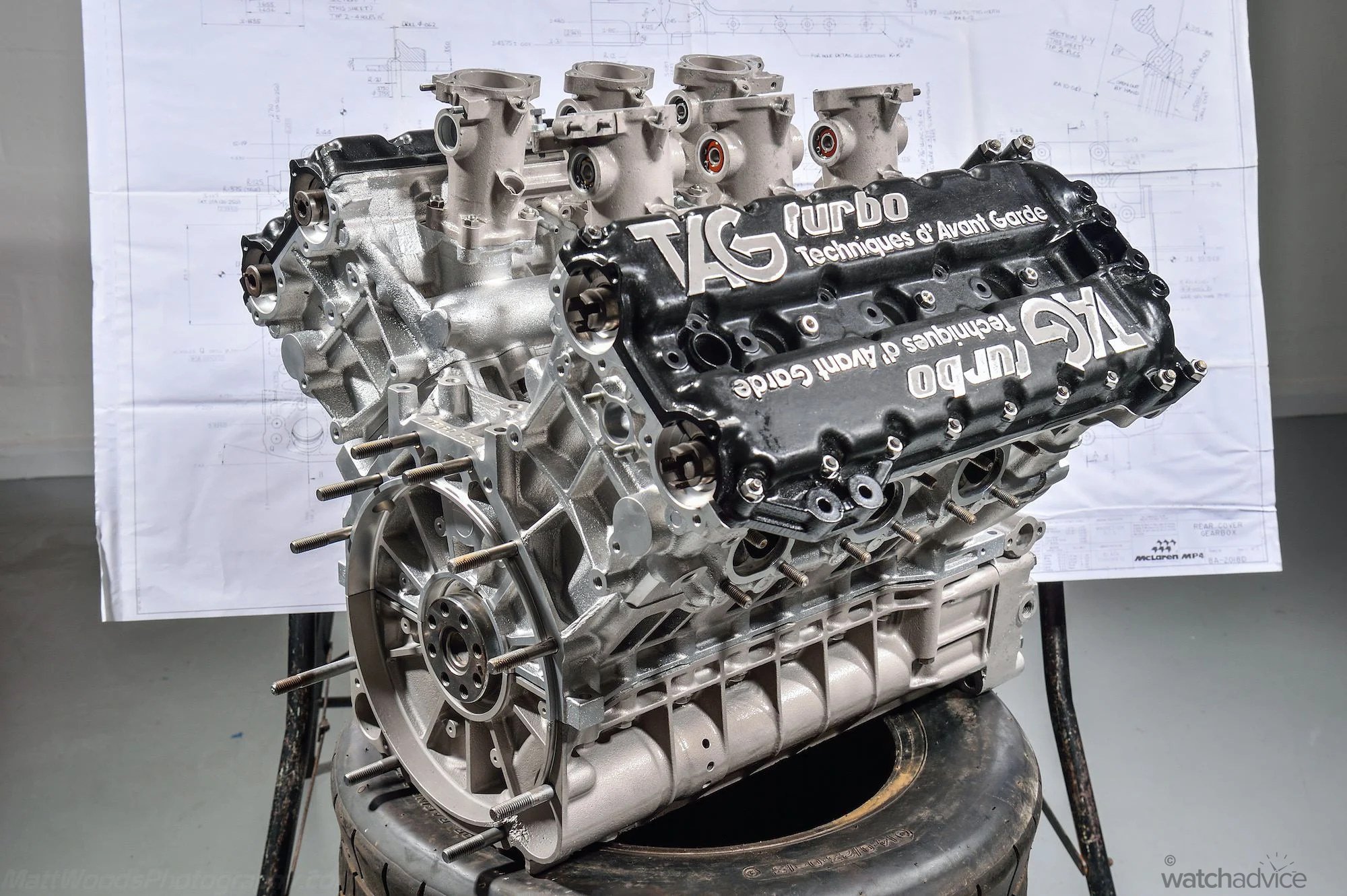
In 1985, a major transitional change came for the brand as the high-tech firm involved in Formula 1 named Techniques d’Avant Garde (TAG), acquired Heuer, forming what we know today as TAG Heuer. With this new acquisition came changes, with the new leadership focusing on modernizing the watchmaker and aligning more with cutting-edge technology. This meant that many of the heritage models were shelved, including the Monaco. For a period of time, the Monaco was relegated to collector memory, surviving through vintage circles and die-hard enthusiasts.
Even though the Monaco was removed from TAG Heuer’s catalogues, the role it played in Le Mans and its association with Steve McQueen kept the legend very much alive. When the nostalgia for 60s and 70s timepieces began to grow in the 1990s, the interest in the original Monaco Ref. 1133B grew as well. With the interest in this original Monaco becoming overwhelmingly clear, TAG Heuer had internal discussions about bringing the timepiece back, even just as a novelty.
The prayers of watch enthusiasts and collectors were answered when, in 1997, TAG Heuer reissued Monaco as a limited-edition tribute, featuring a similar blue dial to the original Ref. 1133B. The reception to this release was as expected: overwhelmingly positive, with watch collectors and fans of the McQueen and Monaco celebrating the return. With this reissue proving that there was now a strong emotional connection to Monaco, in the early 2000s, TAG Heuer decided to add the timepiece as a permanent collection in the brand’s lineup. With the Monaco slowly fading to obscurity and then re-emerging due to demand, this was certainly a case of “you don’t know what you have until it’s gone!”
It’s Still Cool To Wear Square
The success of Monaco’s revival made the timepiece fashionable again. Steve McQueen’s posthumous popularity grew largely in the 2000s, becoming a timeless icon. With this also surged the popularity of his beloved Heuer Monaco. To remember the actor and his Le Mans legacy, TAG Heuer launched multiple tribute Monaco timepieces, especially Gulf limited editions. These timepieces weren’t simply just reissues, they were designed with pop culture in mind, tapping into McQueen’s lasting aura of cool!


With the Monaco now firmly back in the spotlight, TAG Heuer looked to align it with modern faces of entertainment and motorsport. Celebrities like Brad Pitt and Patrick Dempsey (actor & racer) were seen wearing the TAG Heuer Monaco, putting the timepiece in the eyes of a global audience. Dempsey, in particular, as both a TAG ambassador and real-life racer, naturally bridged the world of cinema and motorsport, just like McQueen once did.
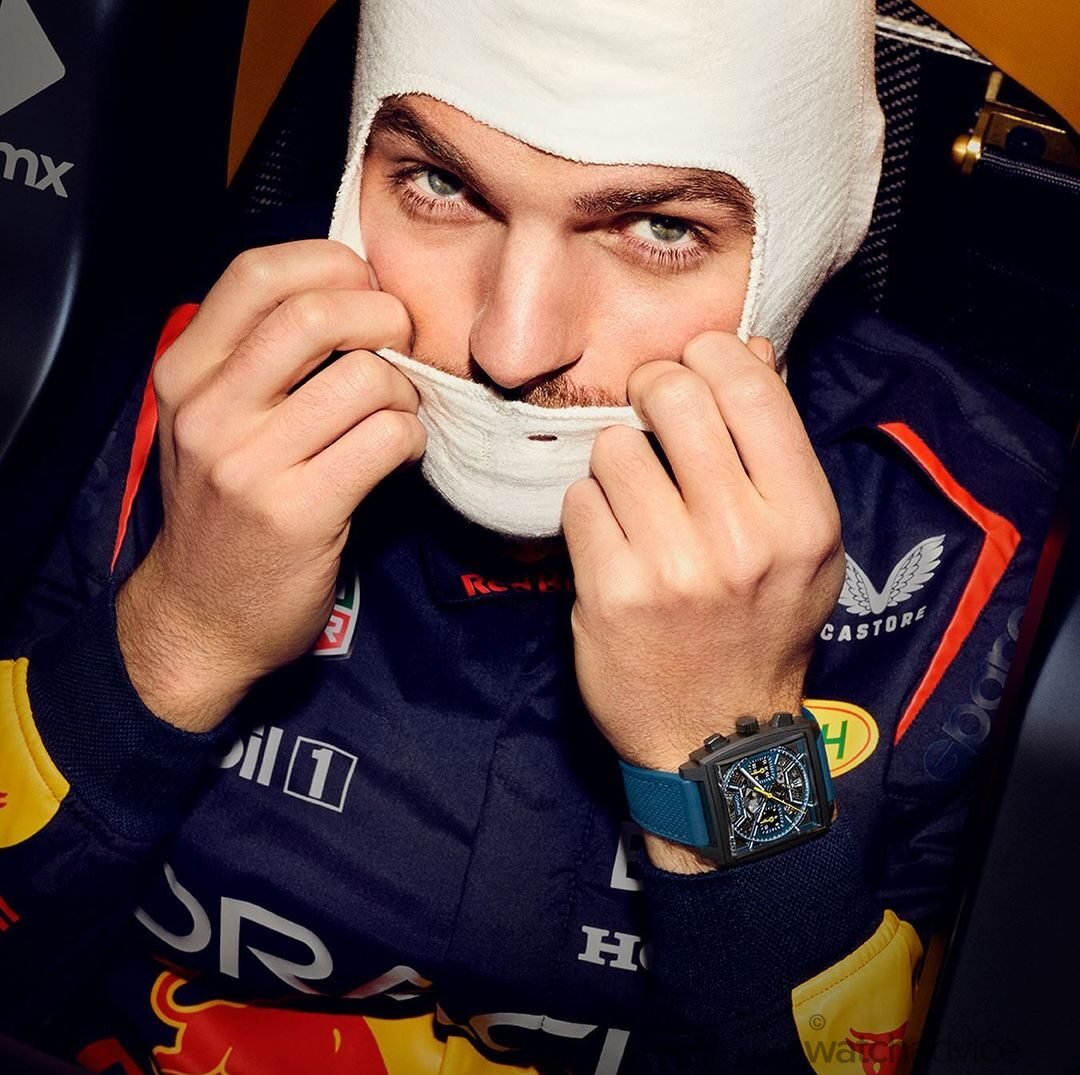
Then we have modern-day motorsport elites like Max Verstappen, who has been seen wearing a skeletonised TAG Heuer Monaco, a timepiece that perfectly reflects his aggressive driving style and cutting-edge performance on the track. As a TAG Heuer ambassador, Verstappen represents a new generation of Monaco wearers: bold and unafraid to push the limits!
Monaco’s presence today has become a symbol of retro-cool style. The unique design of the timepiece makes it instantly recognisable, even to non-watch people, making the TAG Heuer Monaco transcend the niche world of horology. In today’s digital world, the Monaco remains a mechanical icon that is filled with personality and cool style, worn by those who appreciate authenticity and racing heritage.
A Legacy In Metal – Timeline of Notable Monaco Models
Over the last 50 years and counting, the TAG Heuer Monaco has seen countless variations. Each timepiece has certainly captured a unique chapter in its evolution. In this section, I’ve curated a timeline of some of the standout Monaco models that best reflect the collections journey from being a radical disruptor to a motorsport icon. While I haven’t been able to include every single reference, these are the watches that, in my view, represent the key moments, breakthroughs, and the turning points in Monaco’s legacy!
1969 – Heuer Monaco Ref. 1133B (Calibre 11)
As we know now, the original Monaco Ref. 1133B debuted in March 1969 and introduced the automatic chronograph movement Calibre 11 to the world. With a bold square water-resistant case, a striking blue dial, a left-side crown, and avant-garde styling, the Monaco challenged conventional watch design in motorsport. Although it wasn’t the first automatic chronograph to be made, as Zenith released the legendary El Primero movement two months prior to TAG Heuer, the Monaco was the first to bring together such innovation with radical and daring aesthetics, redefining what a sports watch could be!
1972 – Heuer Monaco 1533G
In 1972, TAG Heuer released a more “subdued” version of the Monaco, offering a more classic aesthetic on the iconic case design. This version came with a few slight changes on the dial. Instead of the balanced dual-counter layout at 3 and 9 o’clock, this Monaco offered a fresh new design with a constant seconds counter at 10 o’clock, while retaining the 3 o’clock 30-minute sub-dial. This variant signalled Heuer’s effort to diversify the design, while still retaining Monaco’s identity and its racing roots.
1972 – Heuer Monaco 73633 – Manual Wound Edition
1972 seems like the year for Heuer to experiment with the Monaco! And understandably so as well, with sales for the Monaco starting to decline, Heuer needed to create refreshing new timepieces to help keep the model afloat and appealing for consumers. Especially during a time when slimmer and more precise models were sought after. This edition of the Monaco arguably featured the most dramatic change so far. Heuer went back to their well-known manual chronograph movements and now featured a three-sub-dial layout. The case design and dial “aesthetics” remained the same, keeping Monaco’s core DNA, while giving a new look, especially to those who preferred the traditional 3-counter look of the chronograph.
1974 – Heuer Monaco 74033N – “Dark Lord”
The Heuer Monaco 74033N (“N” stands for “Noir,” meaning black in French), also known as the “Dark Lord,” was released in 1974 and is legendary for its stealthy, all-black PVD finish and manual-wound Valjoux 7740 movement. An extremely rare model that never saw the catalogue, only 100-200 units of this model were produced. The Heuer Monaco “Dark Lord” demonstrated how far Heuer was willing to push the aesthetics of the timepiece, especially during a time when the industry was in uncertainty. This watch was re-released in 2022 as a special edition, as a tribute to this stealth legend. The 1974 “Dark Lord” was also one of the few timepieces released before Heuer discontinued the Monaco.
1997 – Generation 1 – TAG Heuer Monaco CS2110 (re-edition)
One of the first Monaco’s in the collections comeback into the modern world of horology was the CS2110. Now under the TAG Heuer banner, this particular model didn’t feature the Monaco’s signature aesthetics of two square sub-counters and a blue dial. This re-edition was powered by the Calibre 12 movement and featured the iconic square case design. However, this time the crown was placed on the right-hand side. Produced in a limited series, and alongside the other 1997 Monaco ref. 1133B, the timepieces rekindled the nostalgia of the original Monaco timepieces and helped to satisfy the wants of collectors and Monaco enthusiasts. What the CS2110 also did, however, was confirm that there was still demand for the unconventional design that once seemed outmoded.
1998 – Generation 2 – TAG Heuer Monaco CS2111
Building on the success of the new generation of TAG Heuer Monaco models released the year prior, the brand released Gen 2, named CS2111. The model arrived in 1998 and featured a similar design aesthetic to the CS2100, the first re-edition of the Monaco since the collection’s discontinuation. The CS2111, however, featured a more radical design. with a three-counter layout that had two square sub-dials at 3 and 9 o’clock (a nod to the original Heuer Monaco design) and a third more traditional subdial at 6 o’clock. Another “bold” design was the large hour counters and oversized minute track. The CS2111 also came with “TAG Heuer” on the dial, rather than only the Heuer logo.
1999 – Generation 3 – TAG Heuer Monaco CW2XXX
One of the more aesthetically pleasing and “authentic” to the original Monaco models in the new generation releases was the TAG Heuer Monaco CW2XXX. This model was a special edition released in 1999 and was limited to a production of 169 models. This limited production made the timepiece extremely desirable. However, what really turned heads was the aesthetic. The TAG Heuer Monaco CW2XXX went back to the original Heuer Monaco styling with a dual square sub-dial layout. The minute and hour track was done as a white ring, which matched nicely with the sub-dials. What made this model stand out, however, was the black dial, which contrasted beautifully with the white and red elements.
2003 – TAG Heuer Monaco CW2113
In 2003, TAG Heuer added a blue dial version of the brand’s generation 3 Monaco. Featured in TAG Heuer’s catalog, this reference (CW2113) closely depicts the color scheme and layout of the model worn by Steve McQueen in the 1970 movie, Le Mans. This was the first “re-edition” of McQueen’s Monaco, featuring a stunning blue dial, white dual square counter layout, and red hands that stand out beautifully. The engine inside, however, was TAG Heuer’s latest Calibre 17 movement.
2004 – TAG Heuer Monaco V4
2004 was a revolutionary year for the Monaco. TAG Heuer radically reimagined the Monaco with the V4 concept. This was the most technically audacious iteration of the Monaco. TAG Heuer states, “twice patented, is the first watch in the world to feature optimized mechanical transmission belts and a linear winding system”. This groundbreaking design was first introduced to the world during Baselworld, and was produced in limited runs in platinum and titanium. The Monaco V4 showed TAG Heuer’s commitment to pushing boundaries and horological innovation.
2005 – TAG Heuer Monaco Jean Edition Crystal Corals
In 2005, TAG Heuer created a stylish and very chic Monaco aimed at the female clientele. The Monaco Jean Edition Crystal Corals, designed by Vincent Dupontreué, featured an artistic dial that had a mother-of-pearl centre dial, with the outer part being a sunray pattern with diagonal lines. A single red chronograph hand added some colour to the dial, allowing it to stand out beautifully. When looking at the dial of this Monaco, you almost don’t see the three chronograph sub-dials as they blend in so well with the mother-of-pearl backdrop. The timepiece also came with a denim strap with a “coral” motif.
2009 – Generation 5 – TAG Heuer Monaco Twenty-Four Concept Chronograph
To celebrate the 40th anniversary of the Monaco, TAG Heuer released several new versions of this iconic timepiece. This included new editions with the same colour scheme as the original 1969 model, equipped with the Calibre 11 movement, alongside new iterations with the Calibre 12 movement. However, what stood out to me the most was this Monaco Twenty Four Concept Chronograph. This was an aesthetically stunning version of the Monaco, with a black titanium-carbide coated case and a black dial with the Gulf Racing Team livery. This timepiece was dedicated to the 24-hour Le Mans race, and features technology inspired by GT racecar technology. The four corners of the dial are transparent and show shock absorbers, a reference to the suspension system on the racecars.
2014 – TAG Heuer Monaco V4 Tourbillon
On the back of the 2004 Monaco V4 release, it was about time that TAG Heuer came back to upgrade this technical masterpiece. In 2014, the Swiss watchmaker built on its top-secret development of transmission belts (no thicker than a single hair strand!) with one of the most emblematic complications in watchmaking: the tourbillon. This was another world first and certainly a patented technology. A tourbillon driven by belts was almost unthinkable, yet TAG Heuer was able to execute it on one of their now most iconic lines. The TAG Heuer Monaco V4 Tourbillon won Best Design at the Grand Prix d’Horlogerie de Genève, while also being nominated for the “Mechanical Exception” prize.
2019 – TAG Heuer Monaco Calibre 11 – 50th Anniversary 1970’s Special Edition
TAG Heuer released five exclusive versions of the Monaco in 2019, the 50th anniversary of the collection. One of these versions was the 50th Anniversary 1970s Special Edition, a 169-piece limited edition model that featured a textured green Côtes de Genève dial with brown elements. The dial came with the signature Monaco dual sub-dial layout in square shape, with the double hour indices layout and signature red chronograph seconds hand. Other references to the original 1969 Monaco included the left-hand crown and the original “Heuer” logo.
2019 – Generation 6 – TAG Heuer Monaco Heuer 02
Alongside the limited edition releases to celebrate Monaco’s 50th anniversary, TAG Heuer unveiled another bombshell. Two years prior, TAG Heuer unveiled the Heuer 02 movement, an in-house, automatic chronograph movement known for its column wheel and vertical clutch. Now, to continue Monaco’s half-century celebrations, TAG Heuer gave the timepiece the Heuer 02 treatment, which makes this Monaco the first to be powered by an in-house TAG Heuer movement. This Monaco marked the series’ transition into fully modern manufacture territory without losing its unique identity.
2023 – TAG Heuer Monaco Chronograph Limited Edition Night Driver
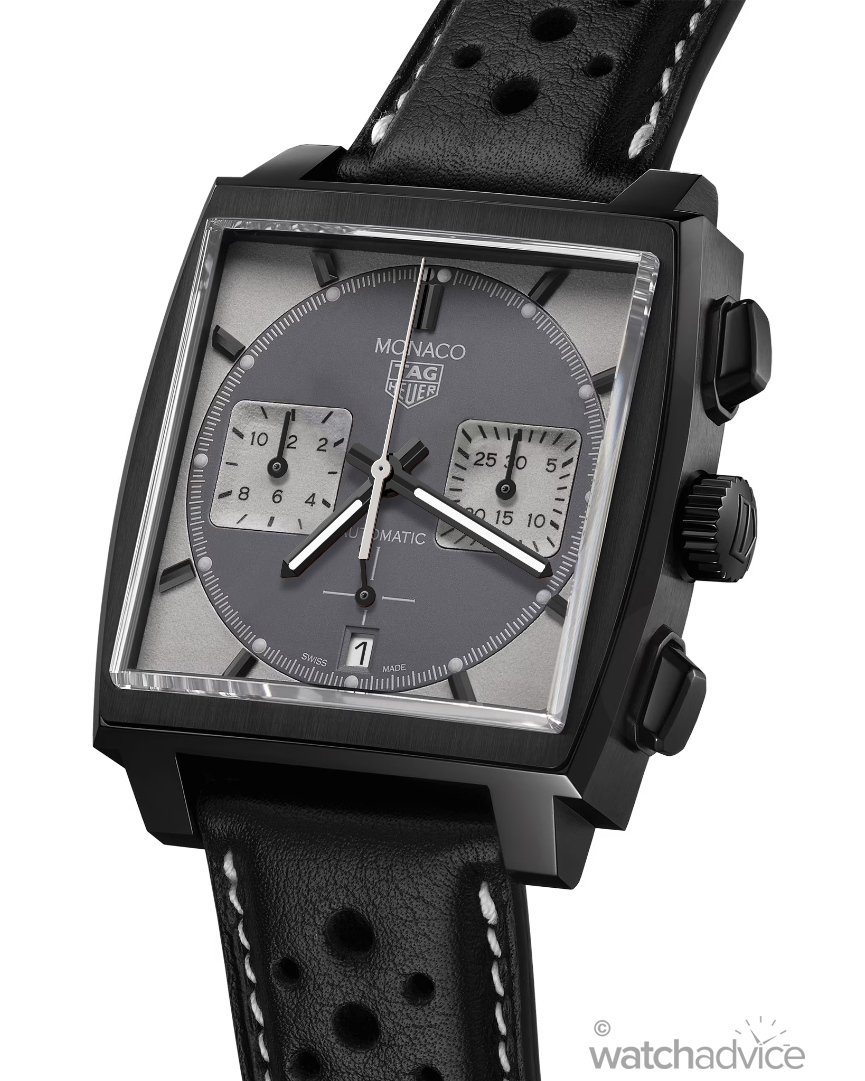
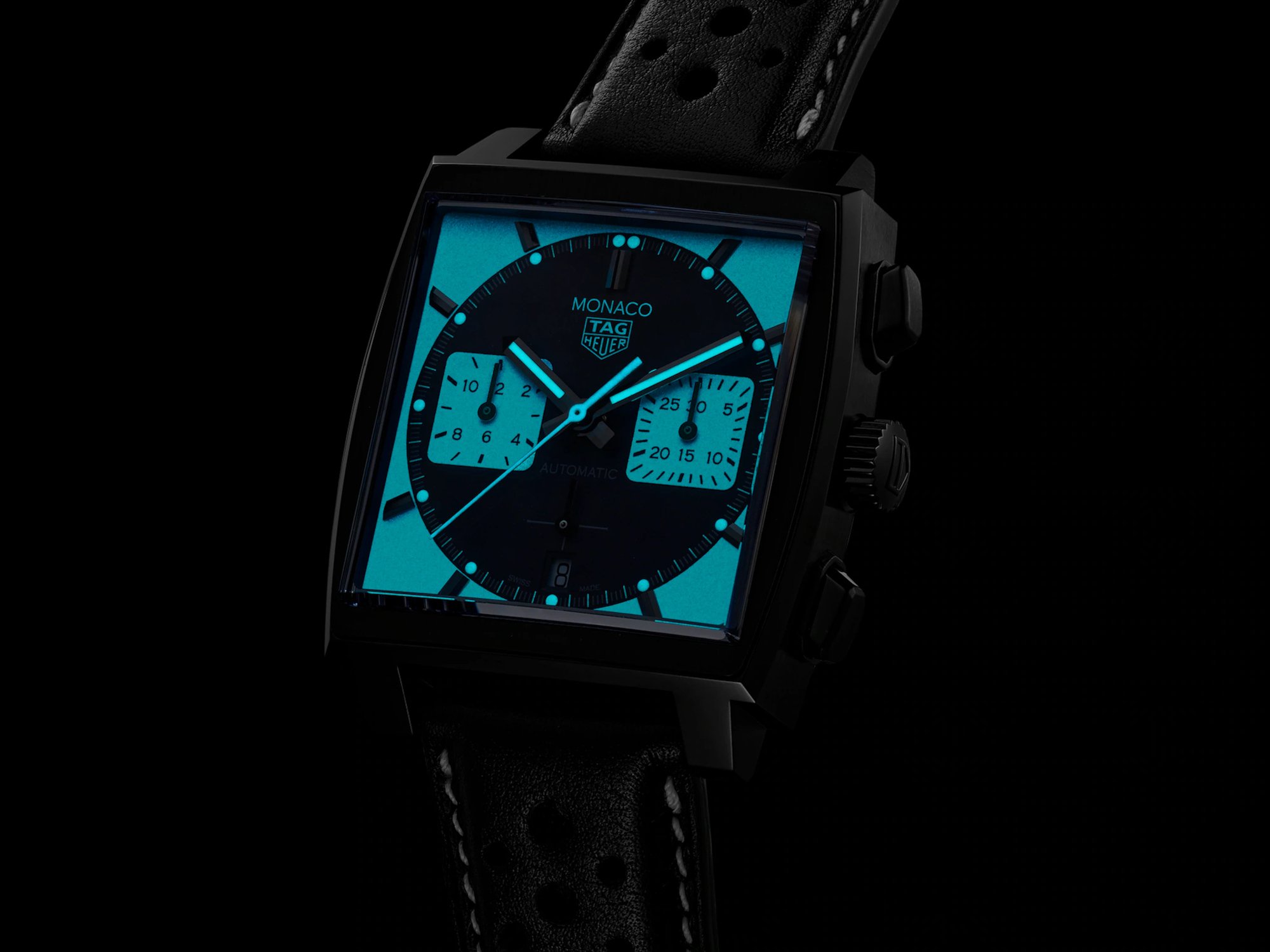
In 2023, TAG Heuer unveiled another unique take on the famed Monaco. This time the Monaco Chronograph Limited Edition Night Driver came with a fully luminescent blue outer dial, which means that in low light conditions, nearly the whole dial would light up in a stunning aqua blue colour! This 600-piece limited edition model also came with a black DLC-coated titanium case, which matched perfectly with the black hour indices and hands. With its perforated straps and blue luminescent dial, this was the perfect dedication to nocturnal motorsport and Midnight endurance racing like the 24-hour Le Mans.
2024 – TAG Heuer Monaco Split Seconds Chronograph
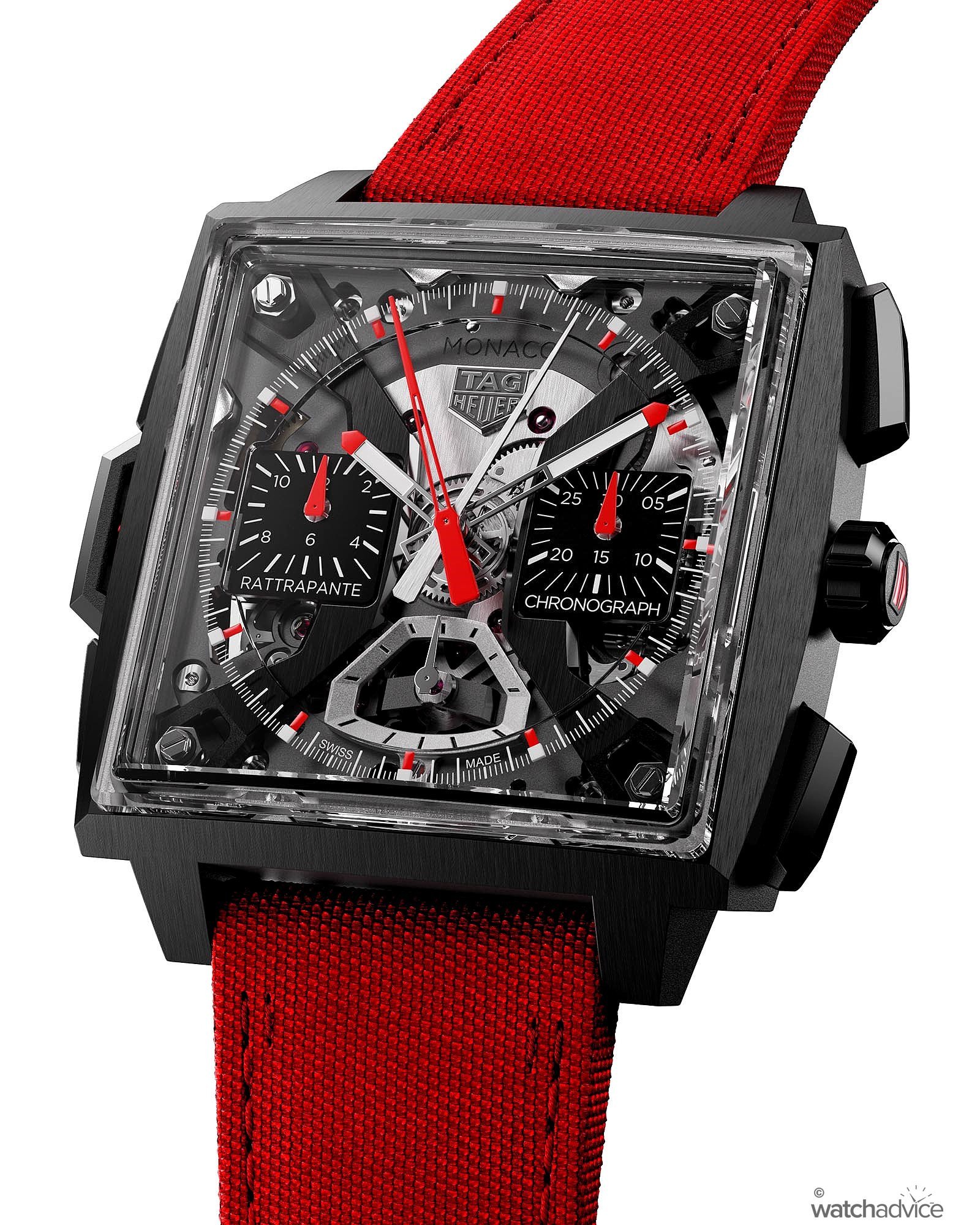
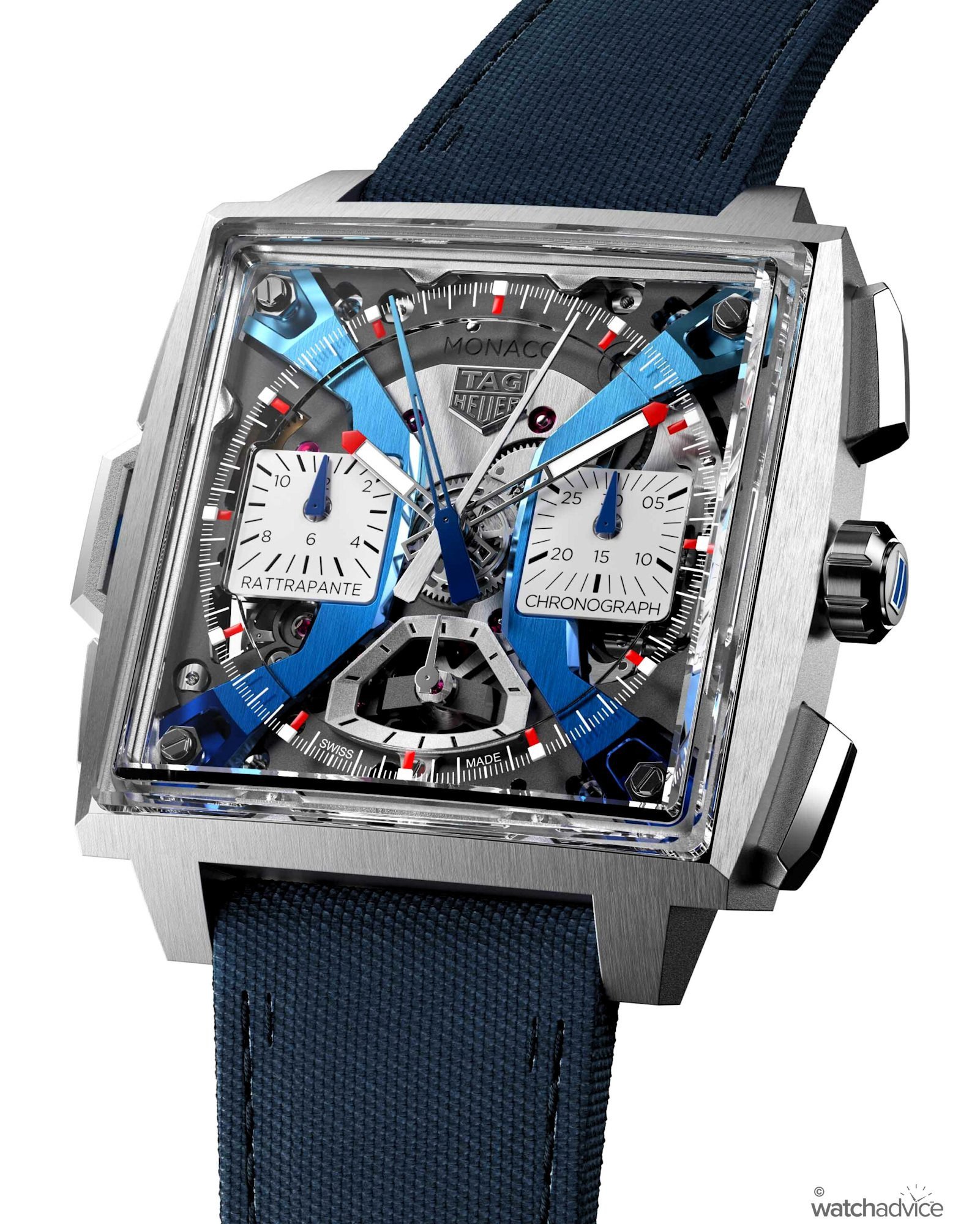
Having the Monaco timepiece be the muse for TAG Heuer’s pinnacle of innovation is quite fitting, as when the Monaco was originally released, it was also a model that stepped outside the norms of watch creation. In 2024, TAG Heuer unveiled two new versions of the Monaco: a black DLC with contrasting vivid red elements or a true-to-heritage design, with blued arches mimicking the colour of the original Monaco model. The Monaco Split Seconds Chronograph is TAG Heuer’s most complex version of the timepiece to date. This release positions the Monaco in haute horlogerie territory, limited to just 50 timepieces per year.
2025 – TAG Heuer Monaco Chronograph X Gulf
As I have mentioned at the start of this article, this is hands-down my favourite Monaco release so far. So it was only natural I include it in this list! Launched only a few months ago, the TAG Heuer Monaco Chronograph X Gulf is not only celebrating TAG Heuer’s return to Formula 1, but also the brand’s renewed Monaco Grand Prix partnership. What I personally love about the timepiece is the beautiful use of colours. Its simple aesthetic is what makes it visually captivating. A silver dial plays the backdrop to the vintage Gulf racing livery colours on the two stripes, while the black square dual counters provide the perfect contrasting touch. This is a timepiece that is sure to turn heads!
2025 – TAG Heuer Monaco Chronograph Stopwatch
Inspired by vintage Heuer stopwatches, TAG Heuer now brings timing precision full circle with the Monaco Chronograph stopwatch. Released at the same time as the Monaco Chronograph X Golf and the latest version of the Monaco Split Seconds Chronograph, the Monaco Chronograph Stopwatch isn’t just another nostalgic throwback; it’s an evolution that bridges the brand’s rich timekeeping history in motorsport with its modern-day role at the forefront of Formula 1.
The Legend Lives On
From the Monaco’s disruptive debut in 1969 to being seen on the wrist of one of the most popular actors, this was simply never just a timepiece, but rather a symbol of rebellion, innovation, and racing heritage. A sports watch with a square case when the world was round, a bold design with a new automatic chronograph movement when others played it safe, the Monaco carved up it’s own path in horology and motorsport. And that’s one area it certainly dominated. The Monaco and the world of motorsport became inseparable. From being named after the prestigious Formula 1 race in Monaco, to being featured in the Le Mans film, the Monaco’s presence was not just a nod to timing precision, but a celebration of the adrenaline and style that defines racing.
During the Monaco’s brief hiatus, it showed us how much the collection was really loved. With collectors and enthusiasts wanting a comeback, TAG Heuer answered the call, reviving the legend in 1997 with re-editions that stayed true to the original spirit. What followed was not just a temporary return, but a rebirth. The Monaco became a cornerstone of the brand once again, now evolving with modern materials, in-house movements, and remarkable innovations that Jack Heuer would certainly be proud of.
Now, over 50 years later, the Monaco is still standing proudly in a league of its own. Jack Heuer’s bold and daring design serves as a reminder that taking risks doesn’t always bring immediate rewards, but the payoff can be timeless. The TAG Heuer Monaco wasn’t an instant icon, yet today, it stands as one of the most celebrated and collectible chronographs in the world! Its resurgence proves that true innovation, no matter how ahead of its time, always finds its place in history.


